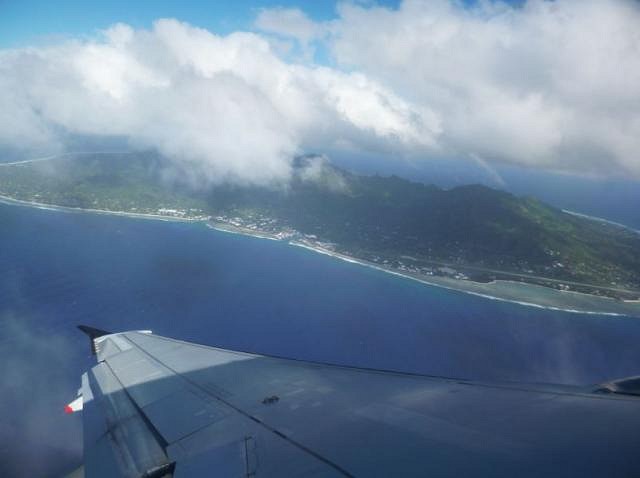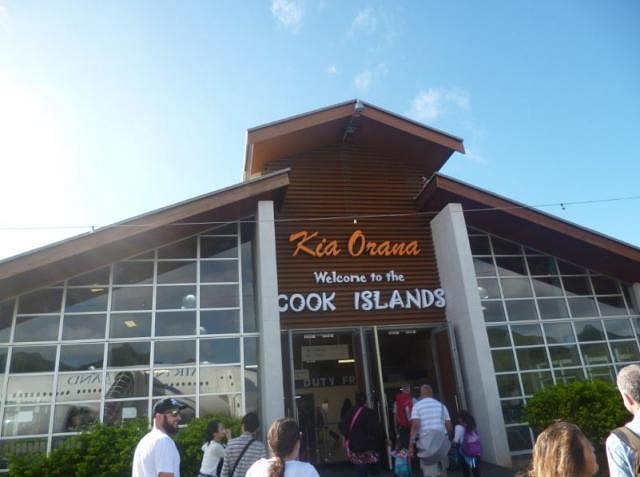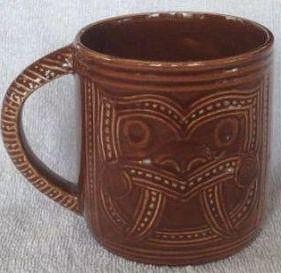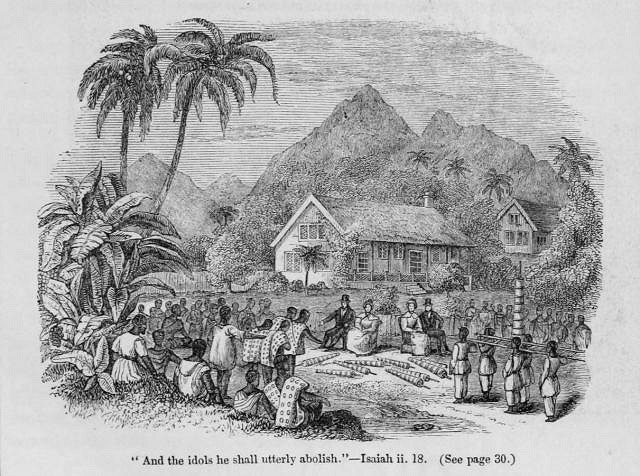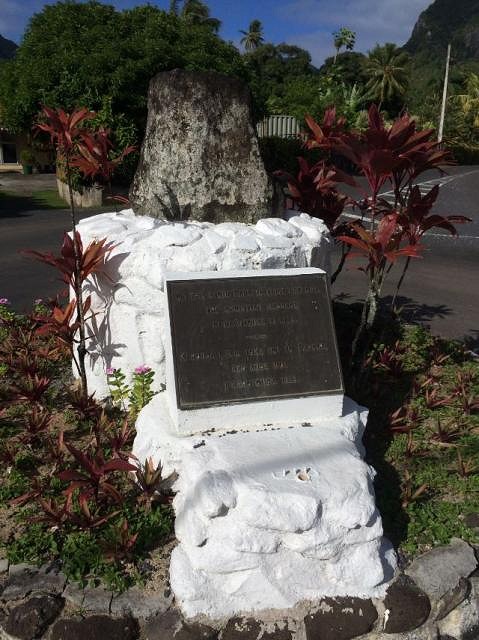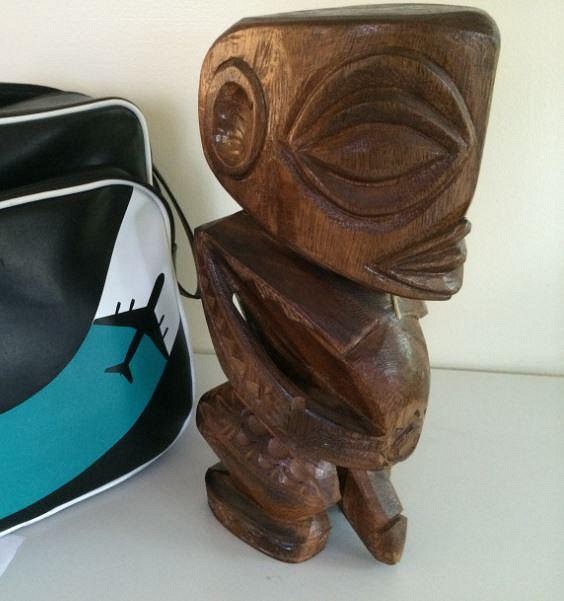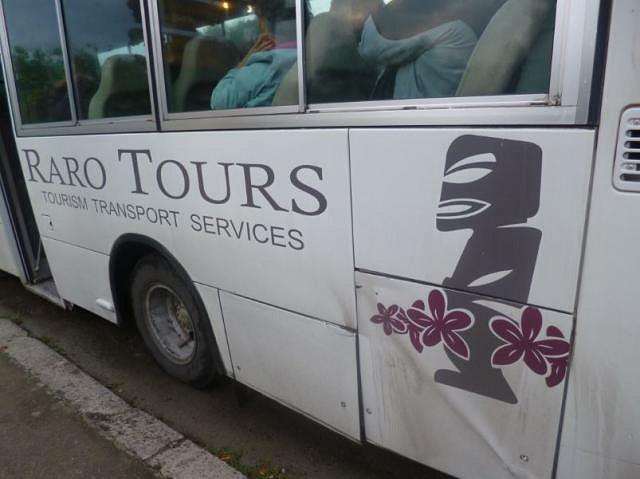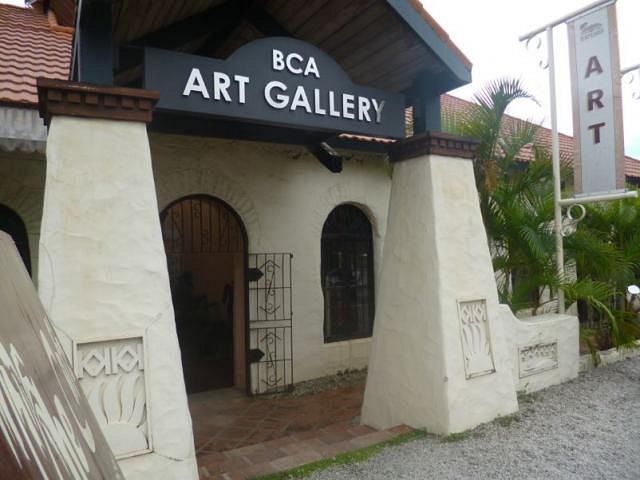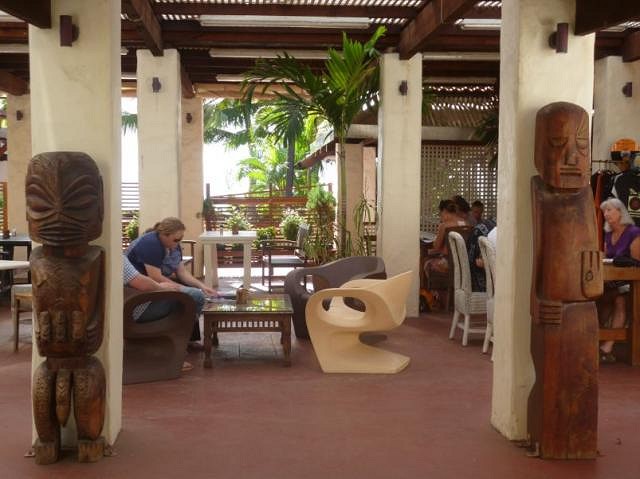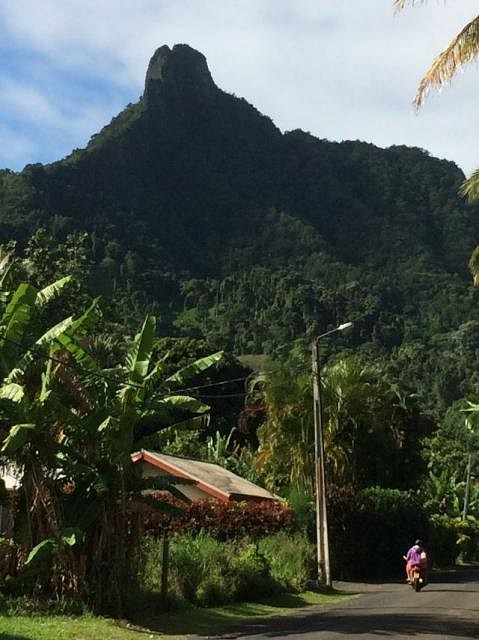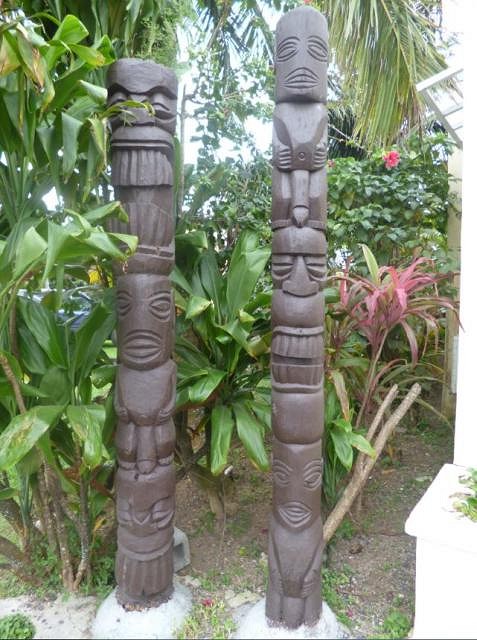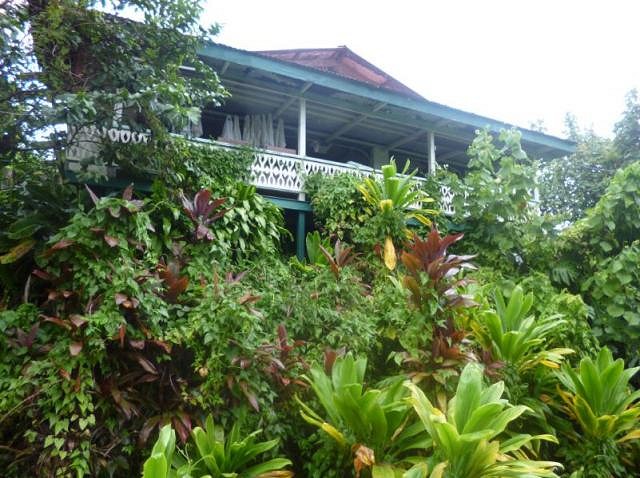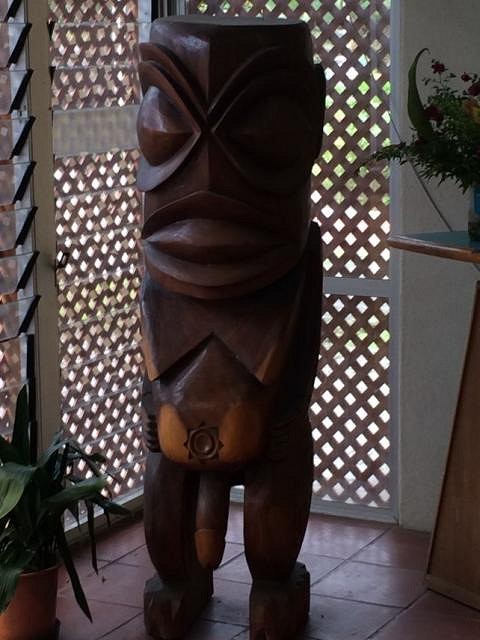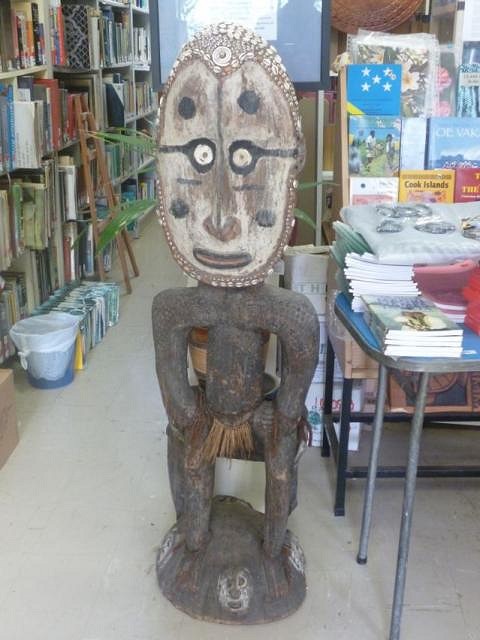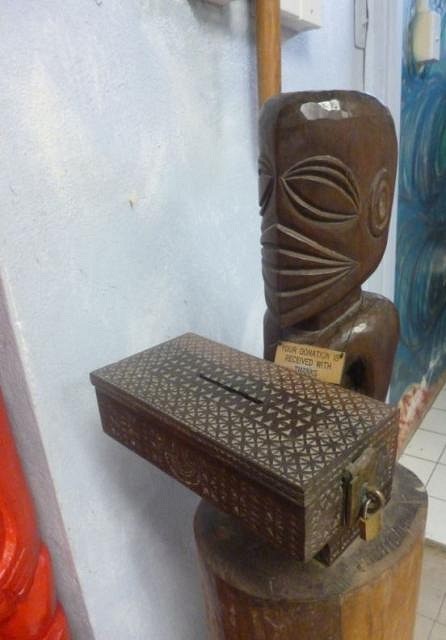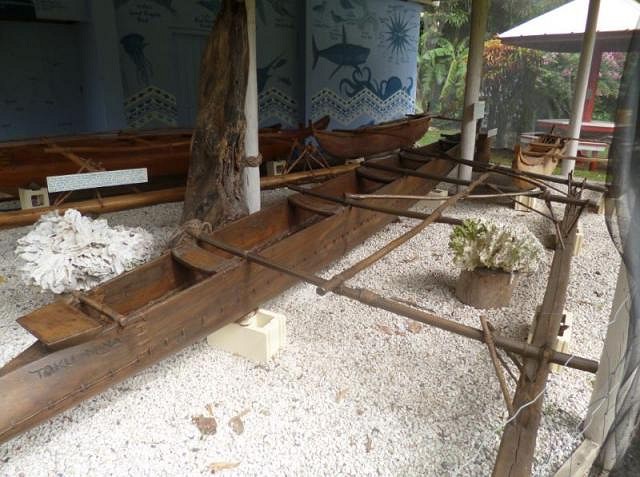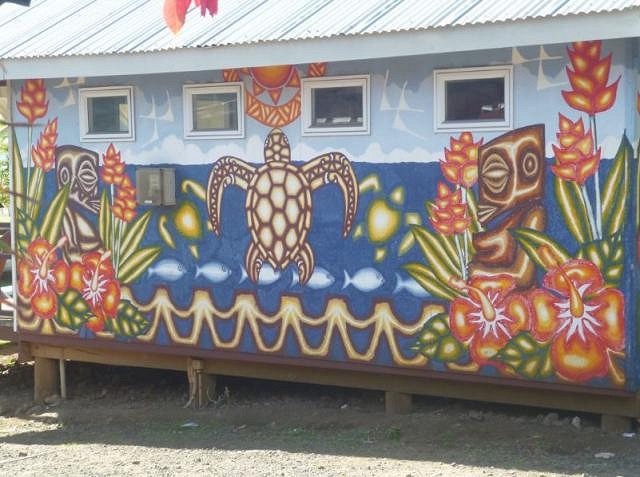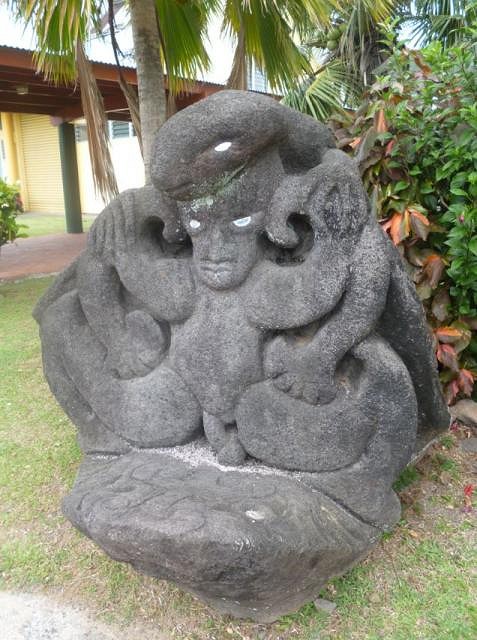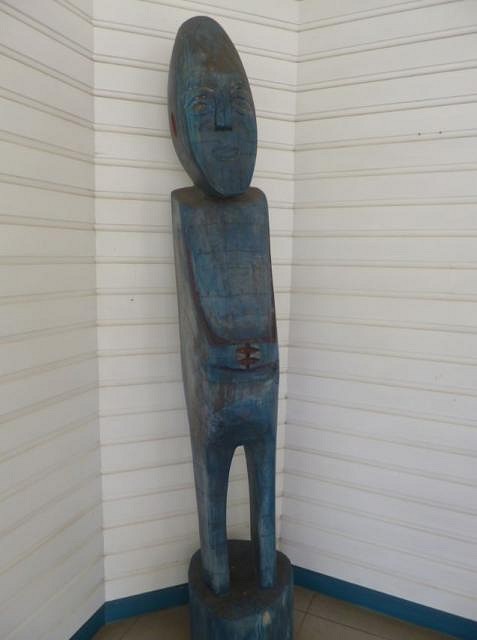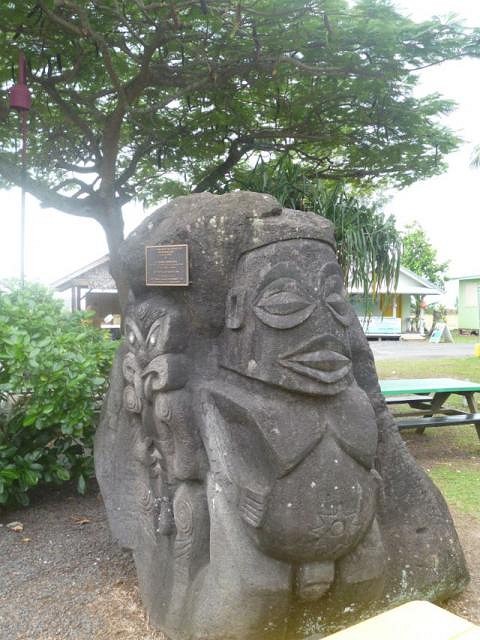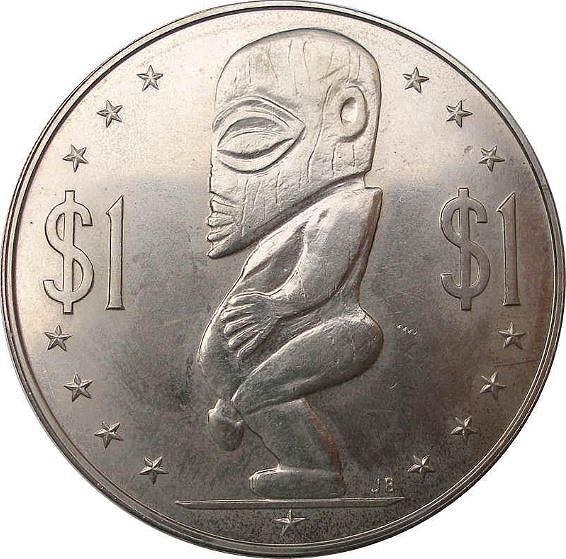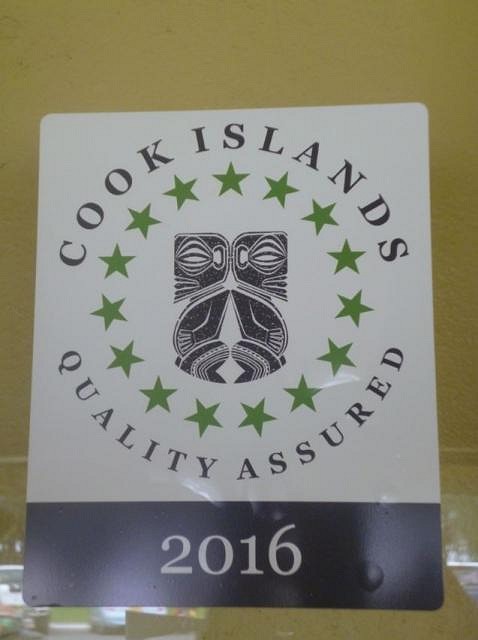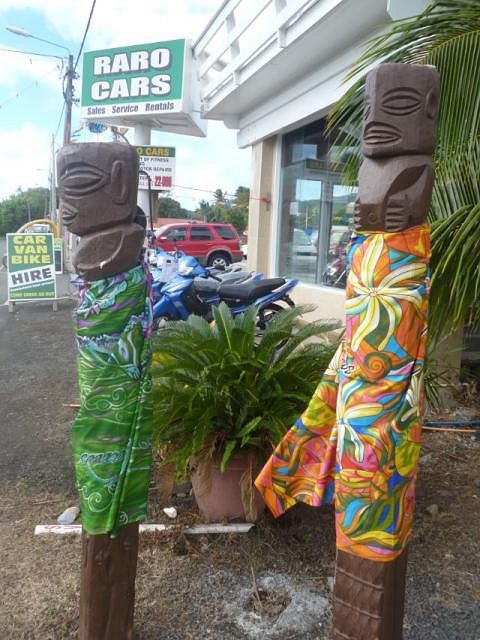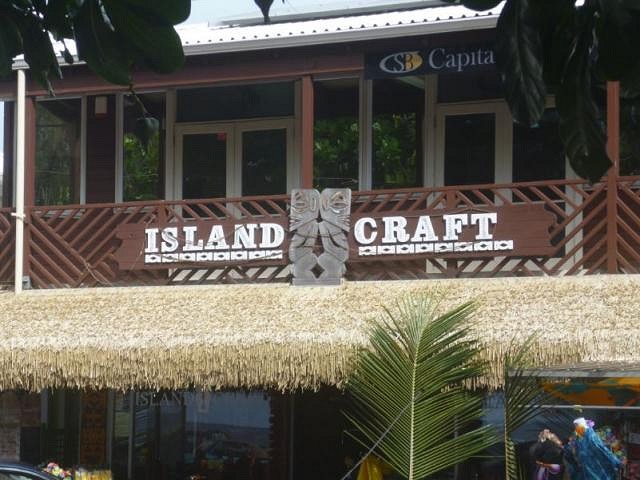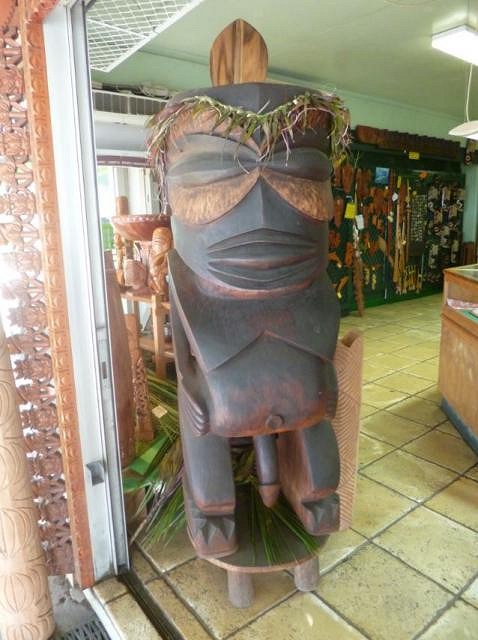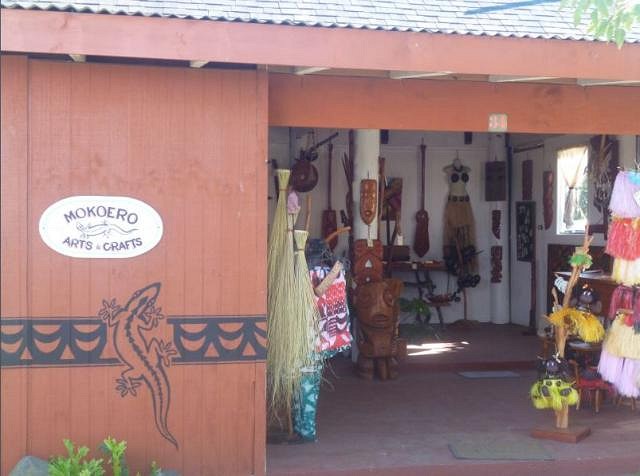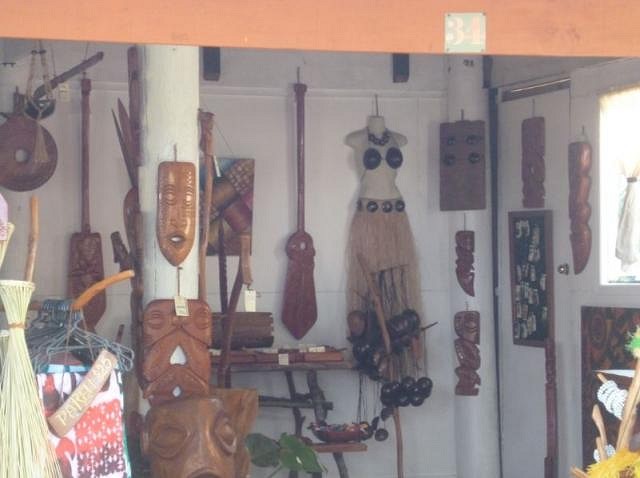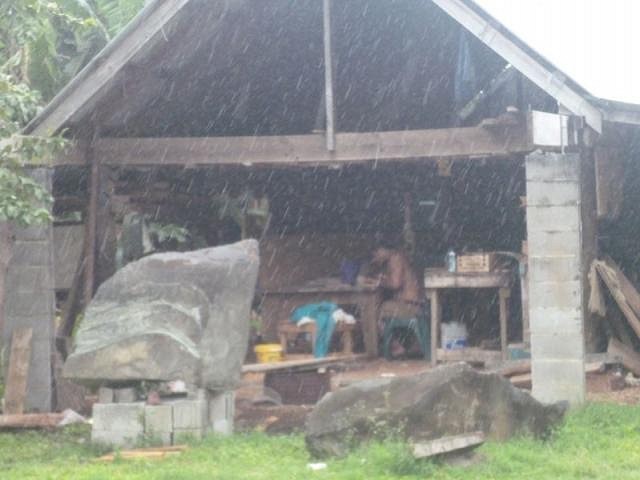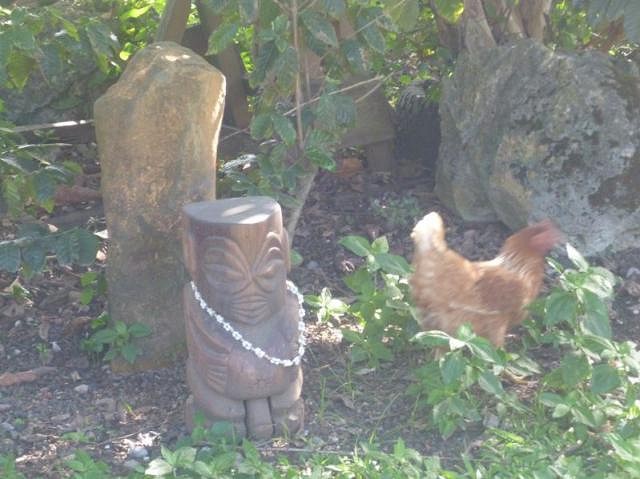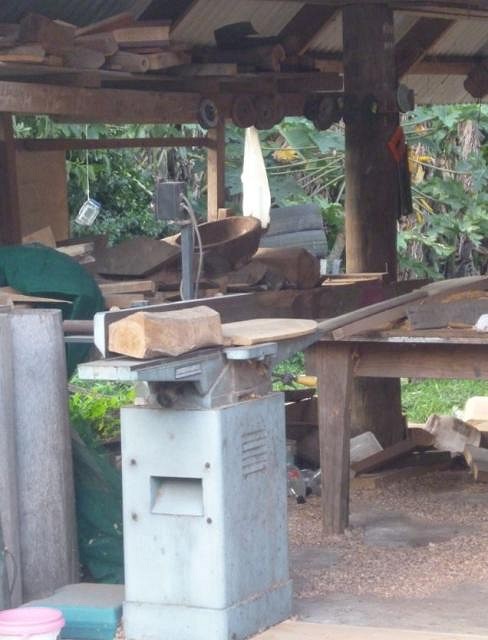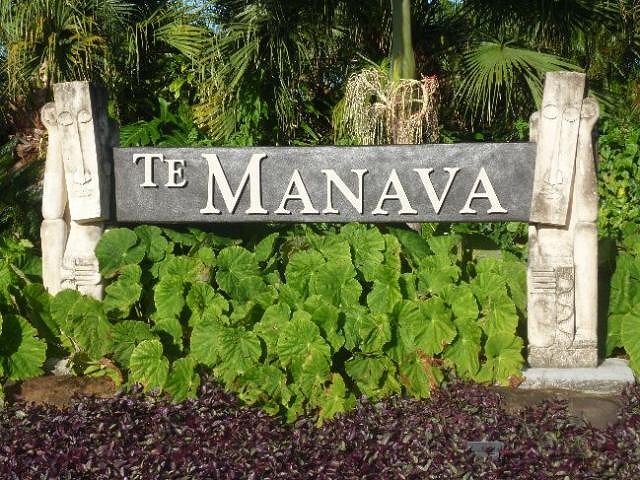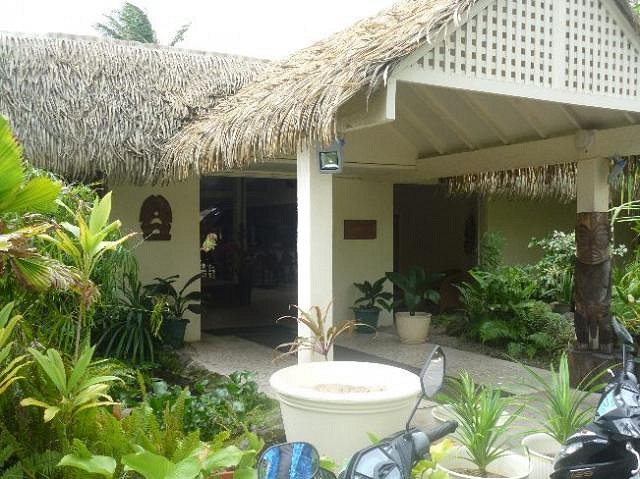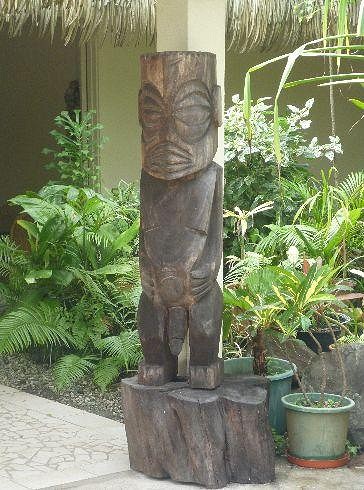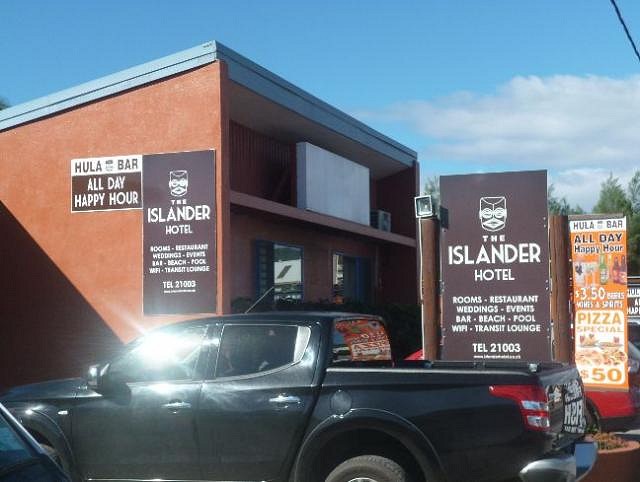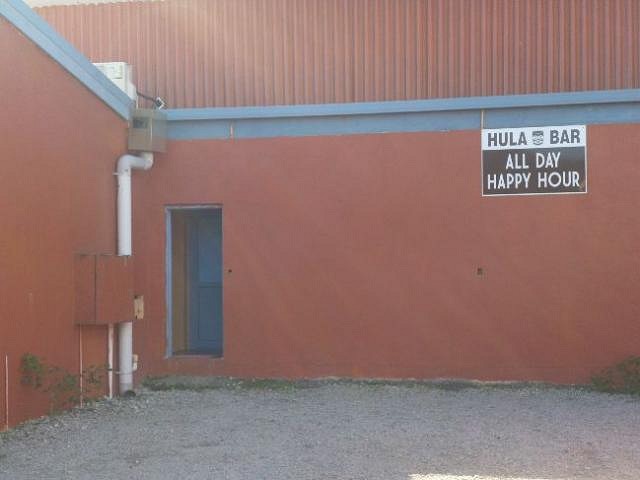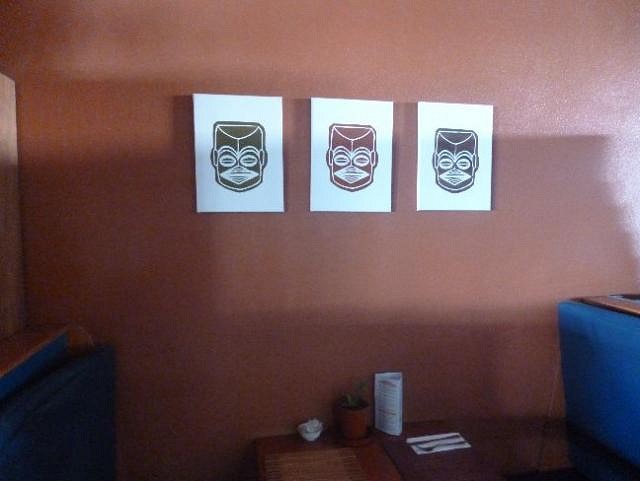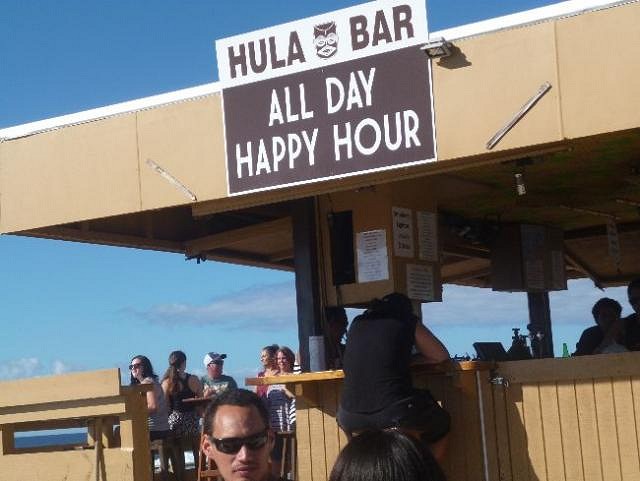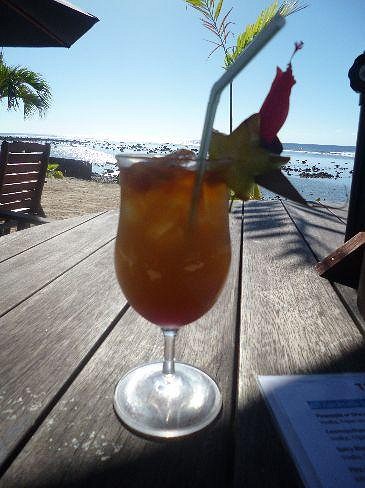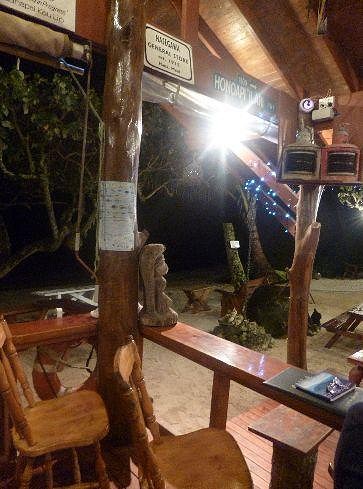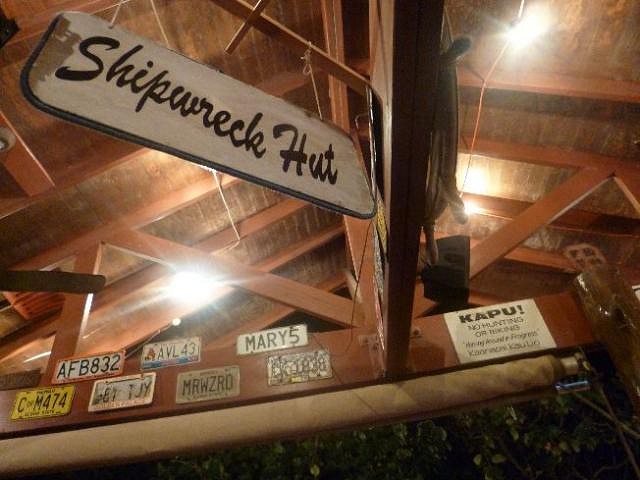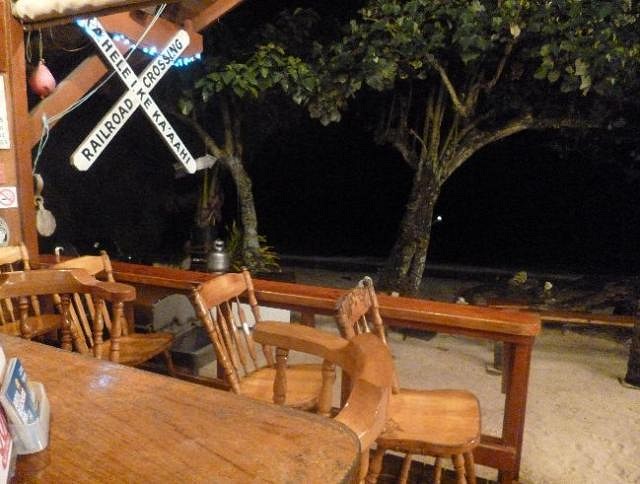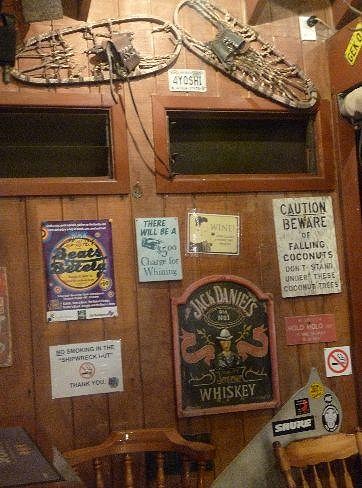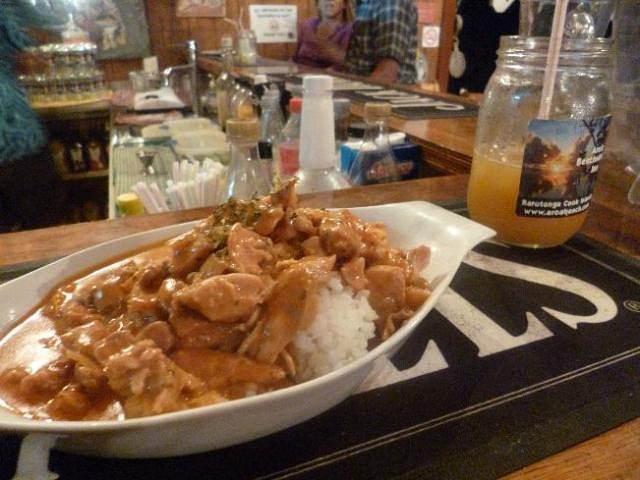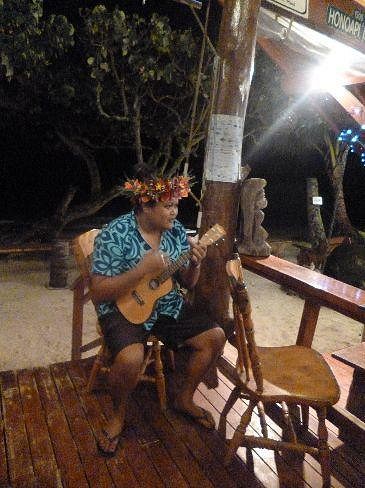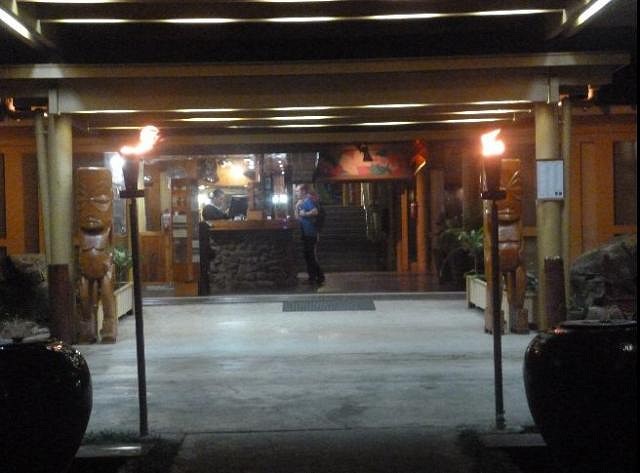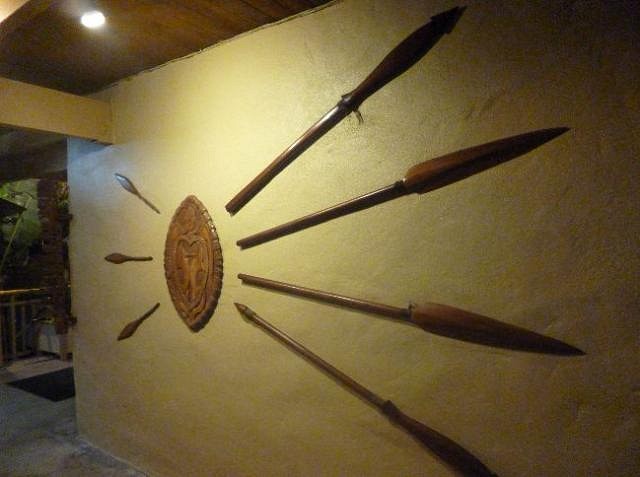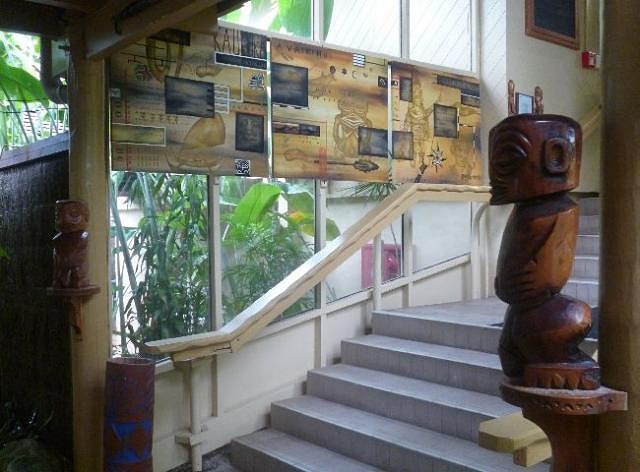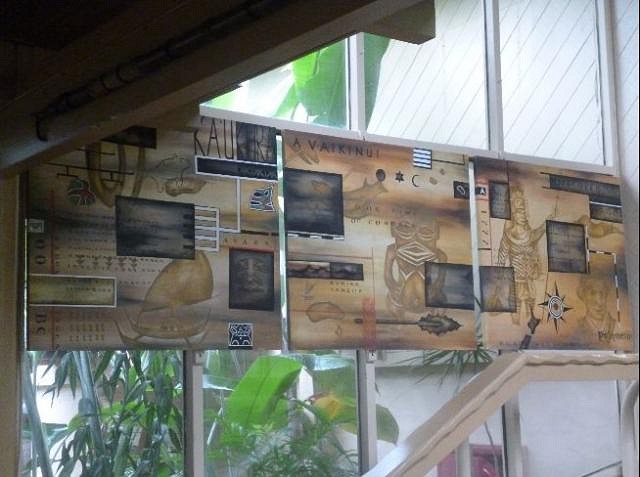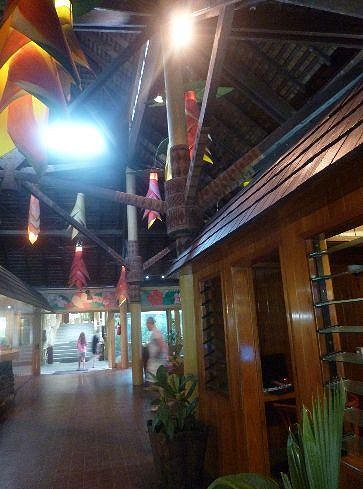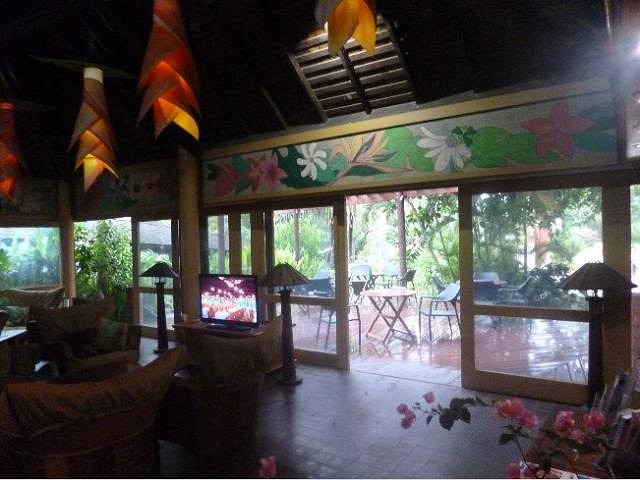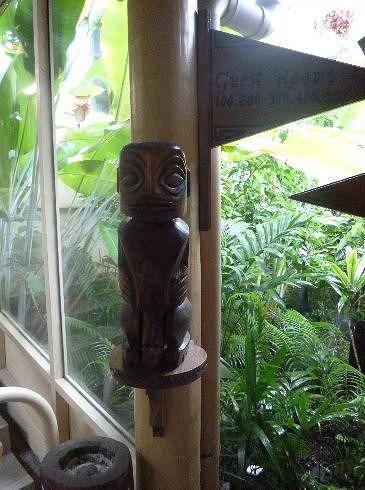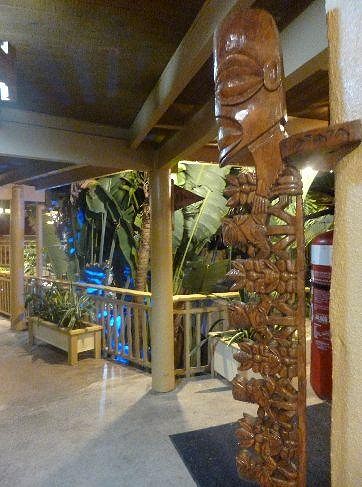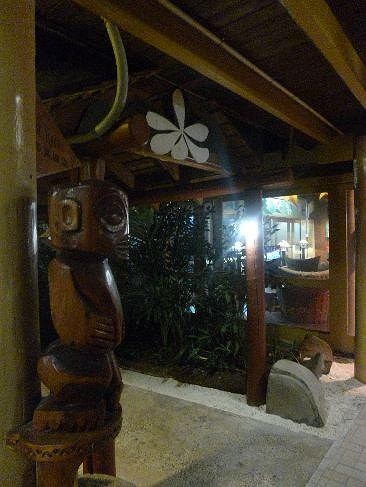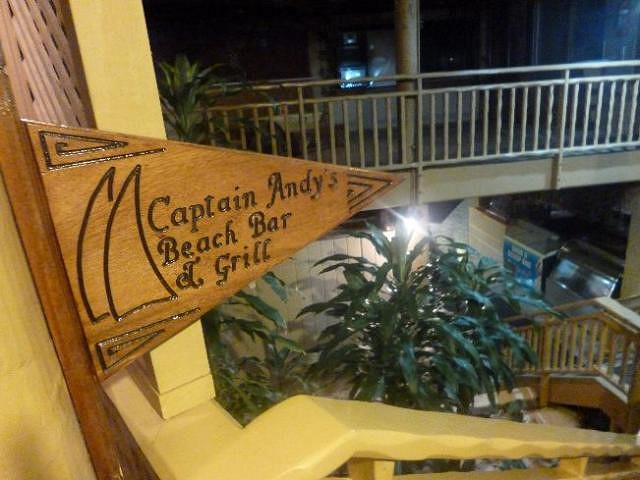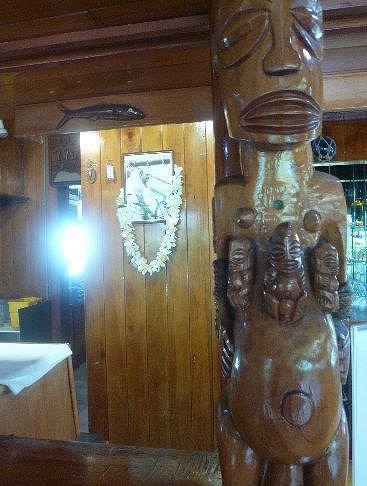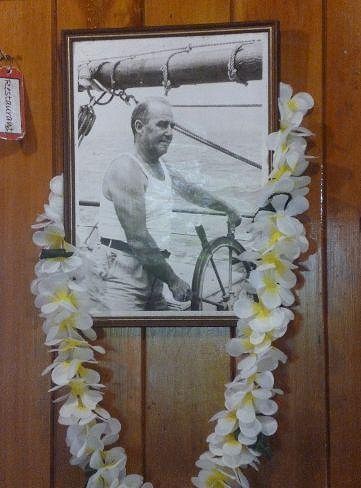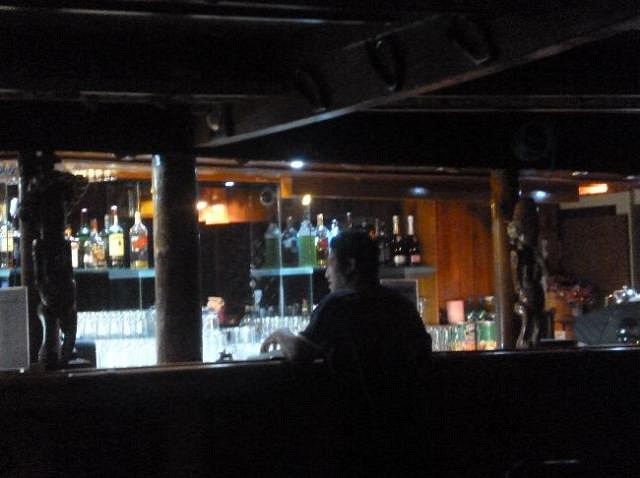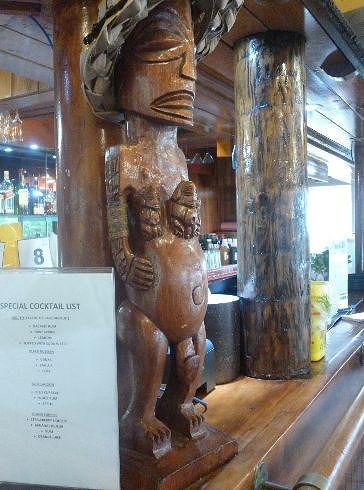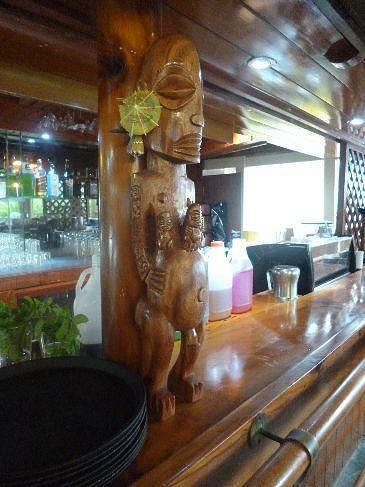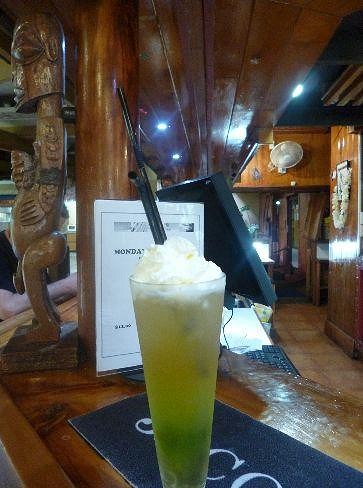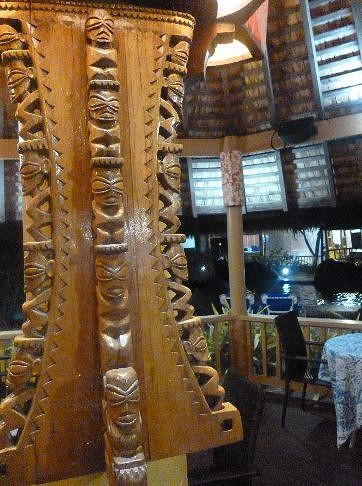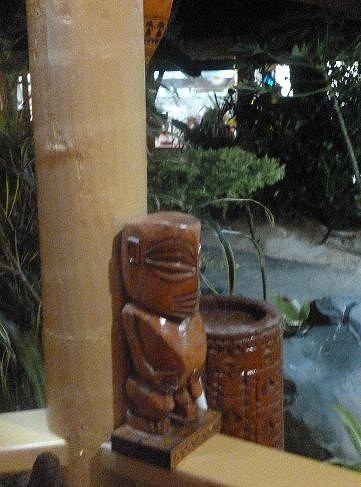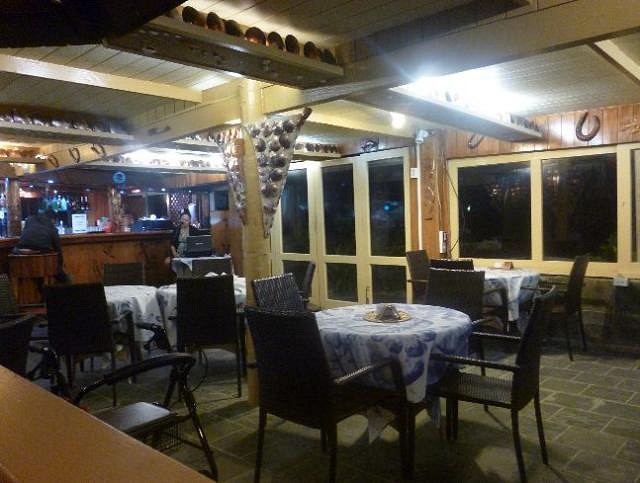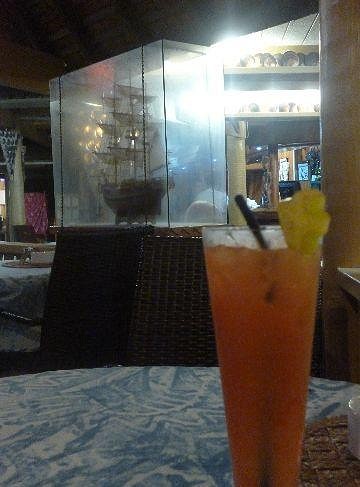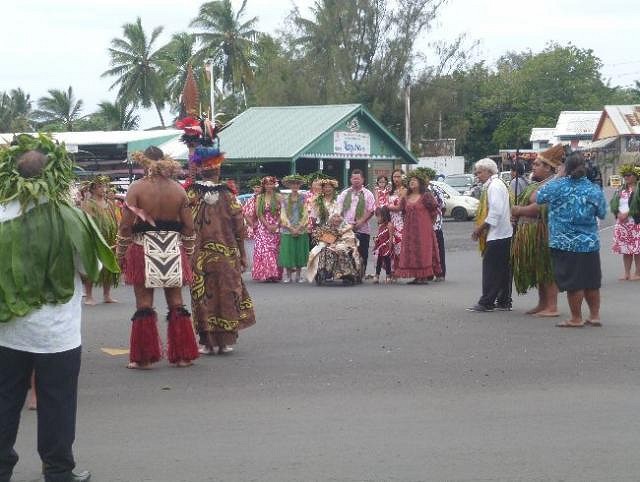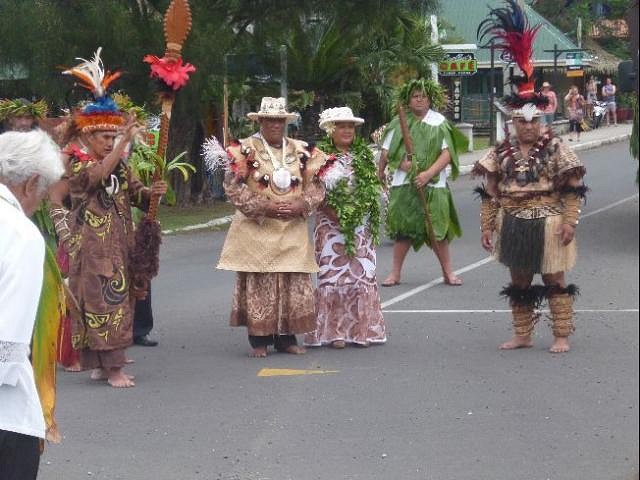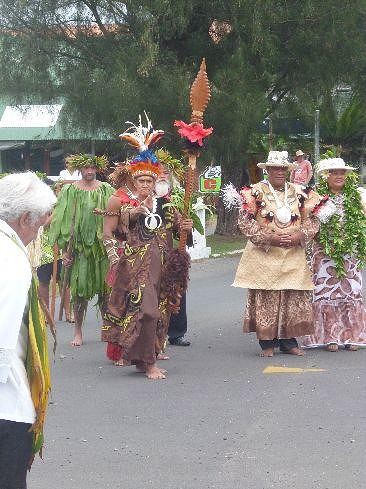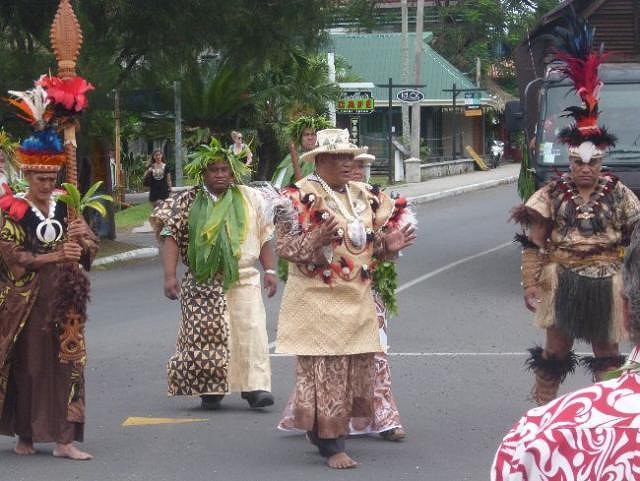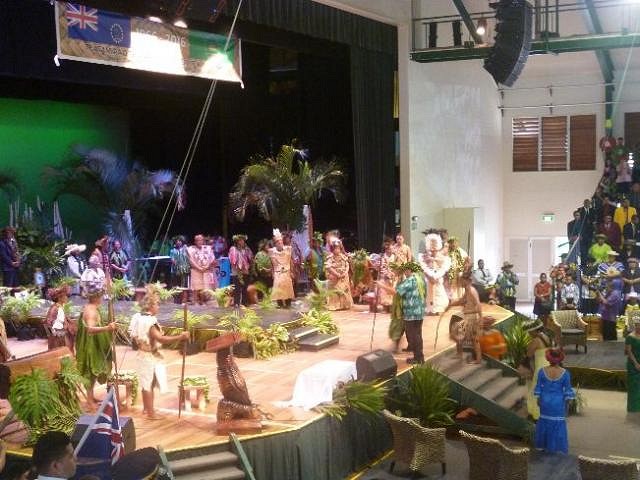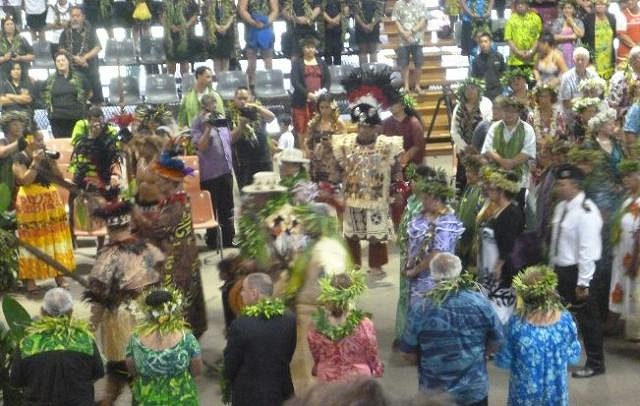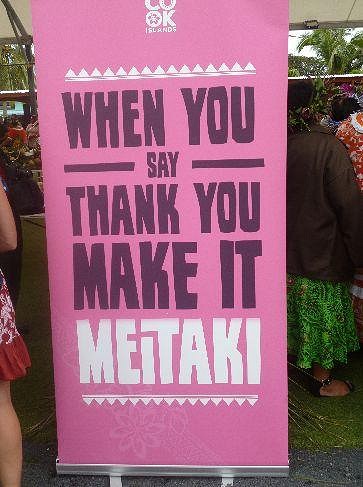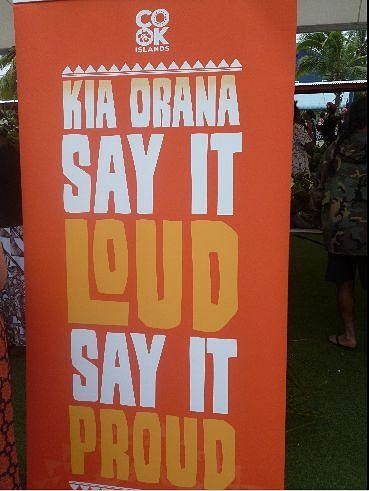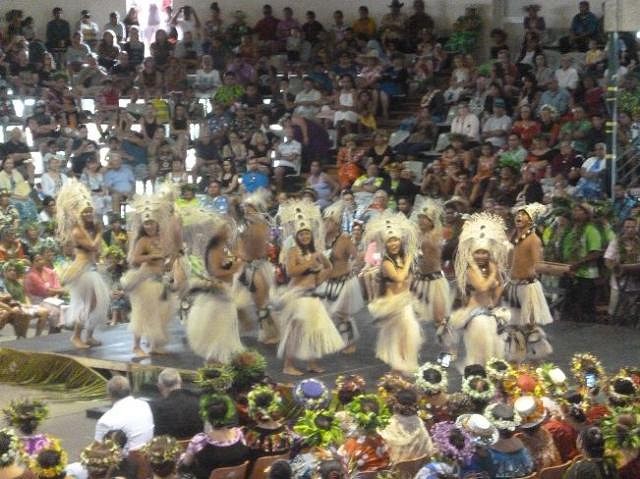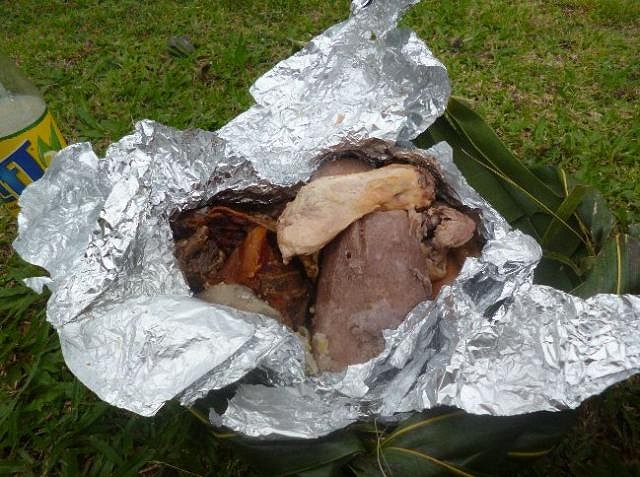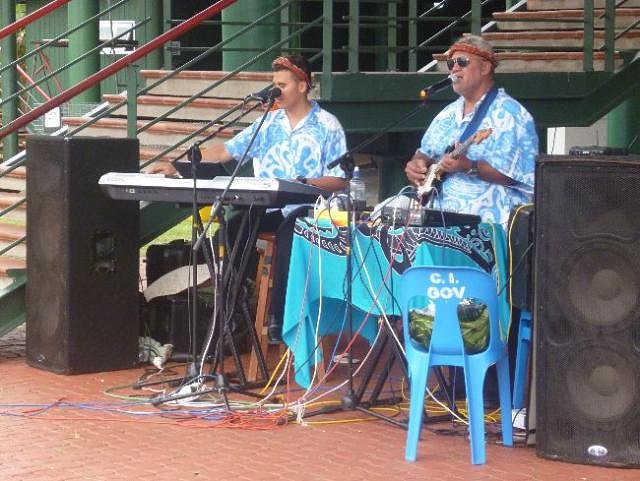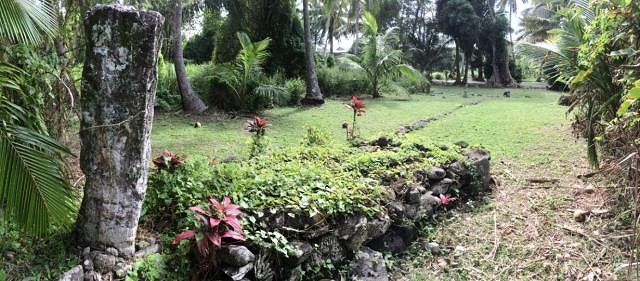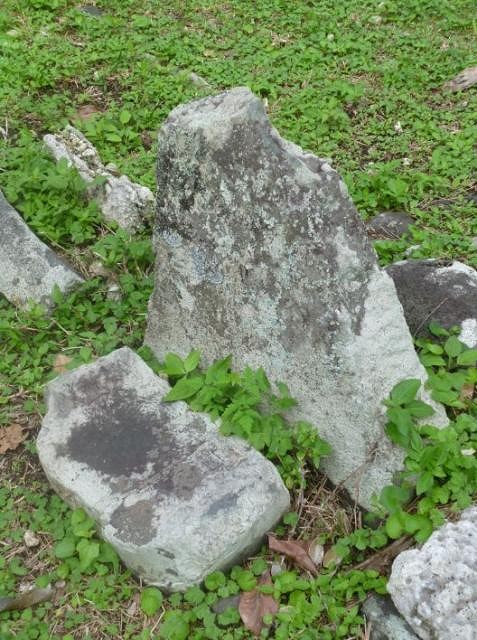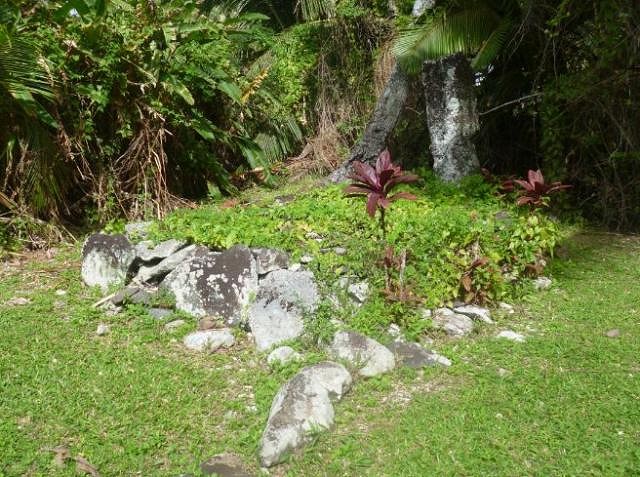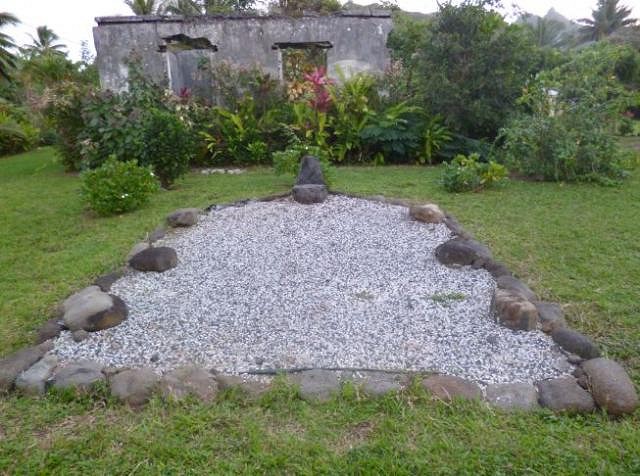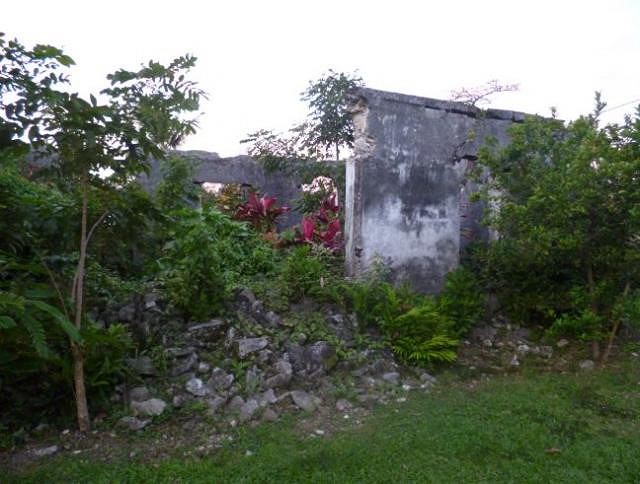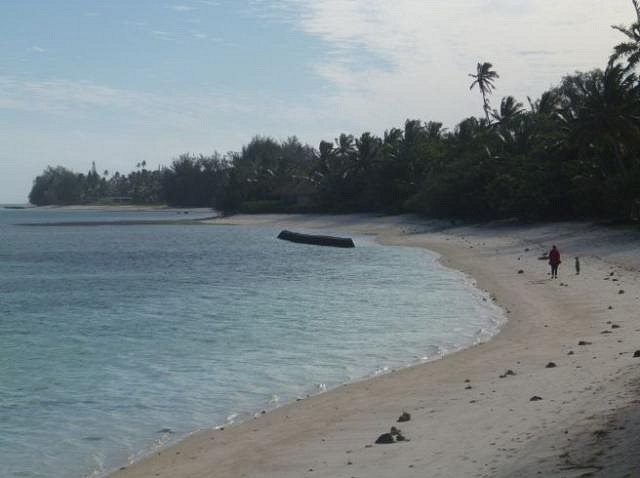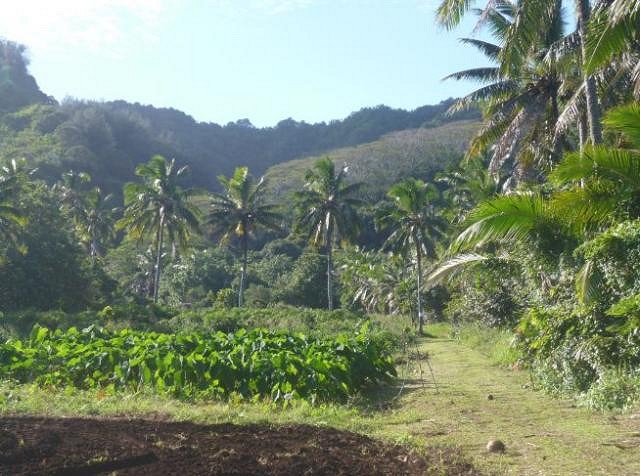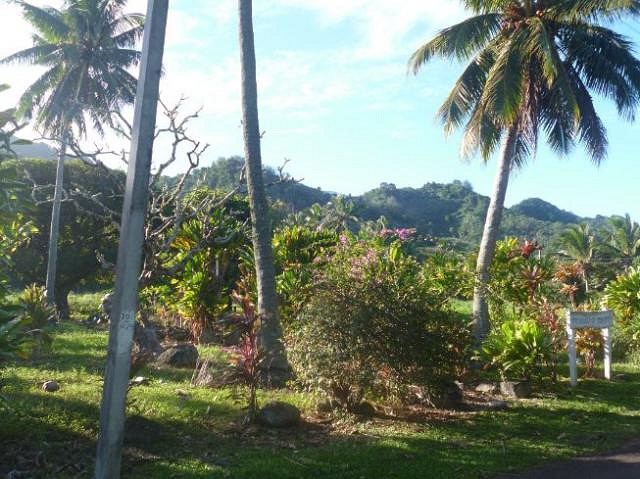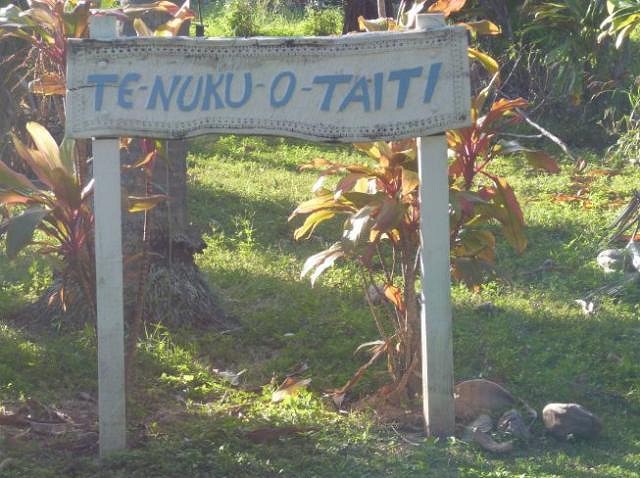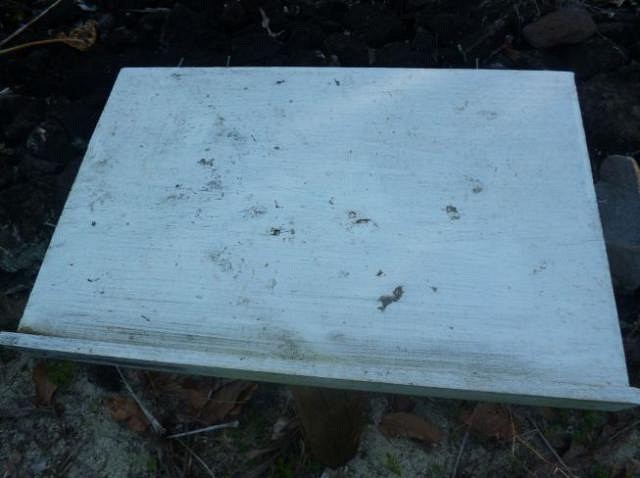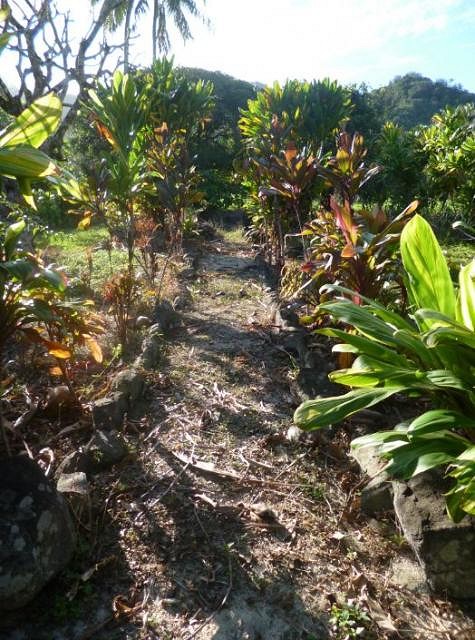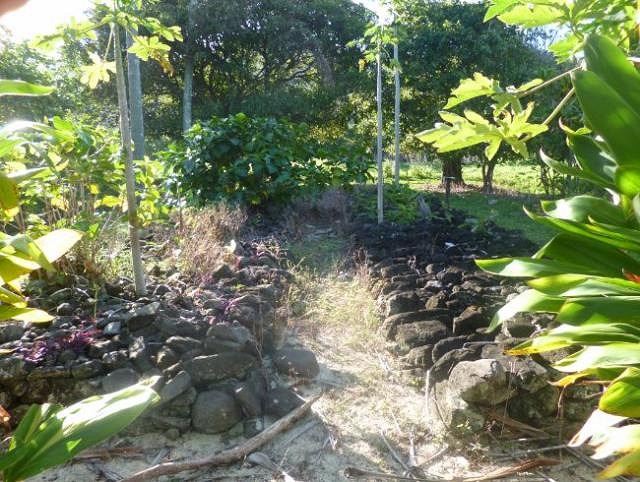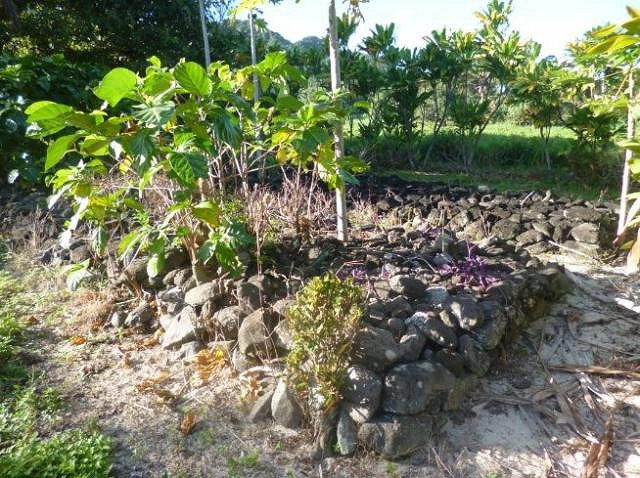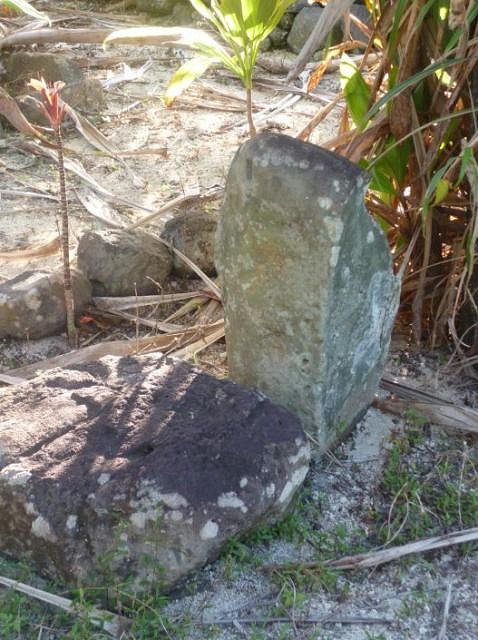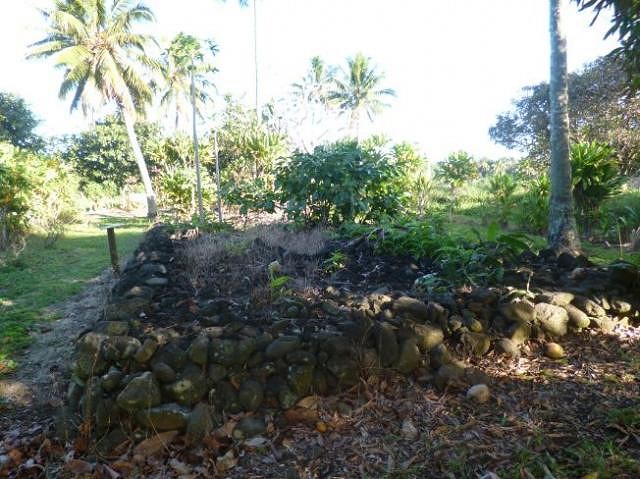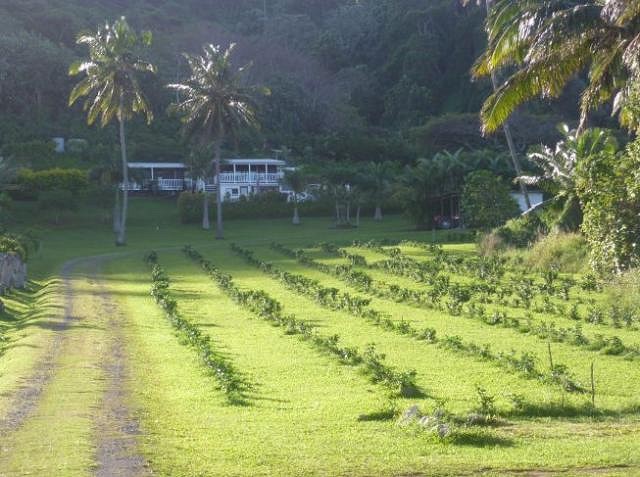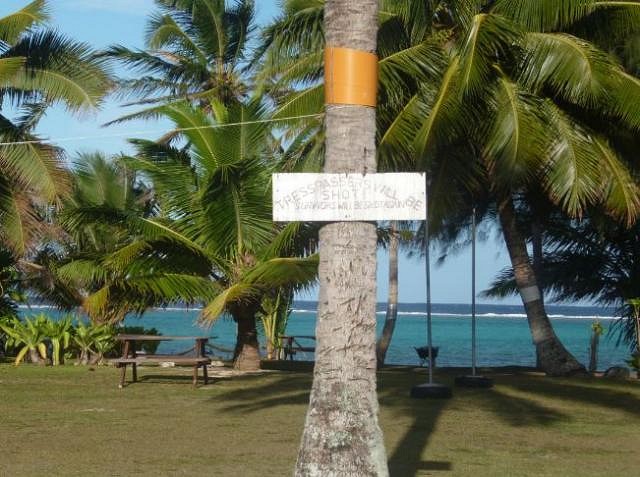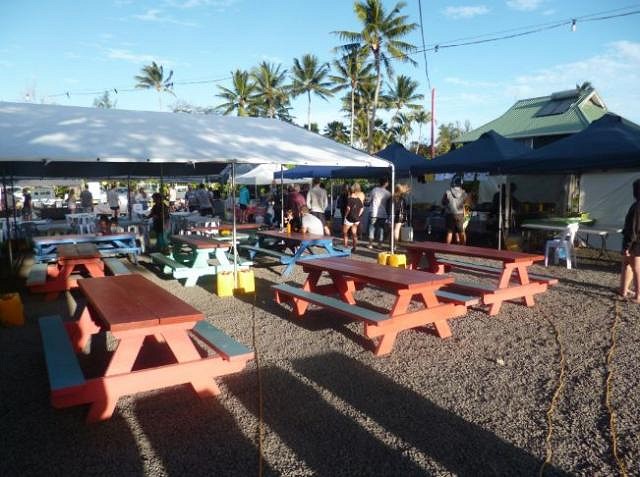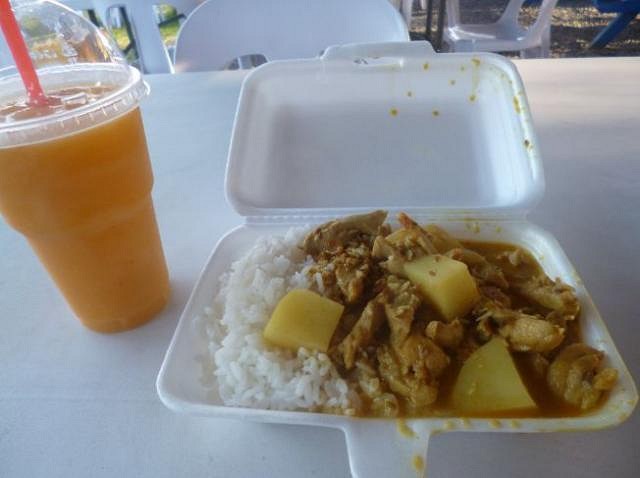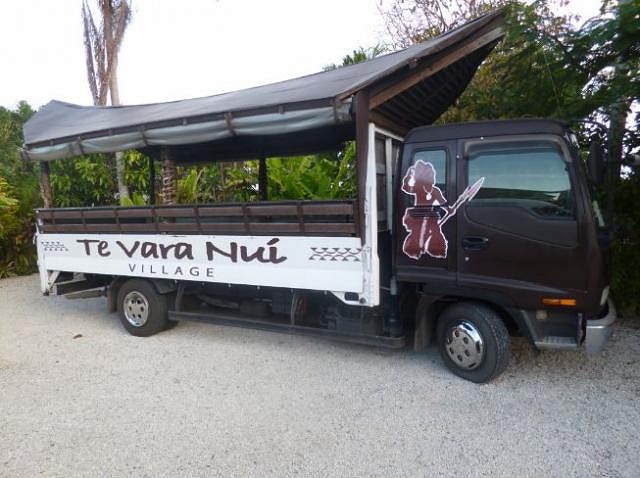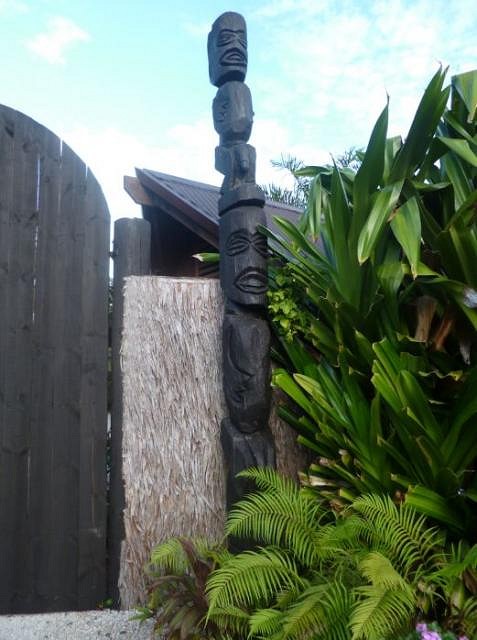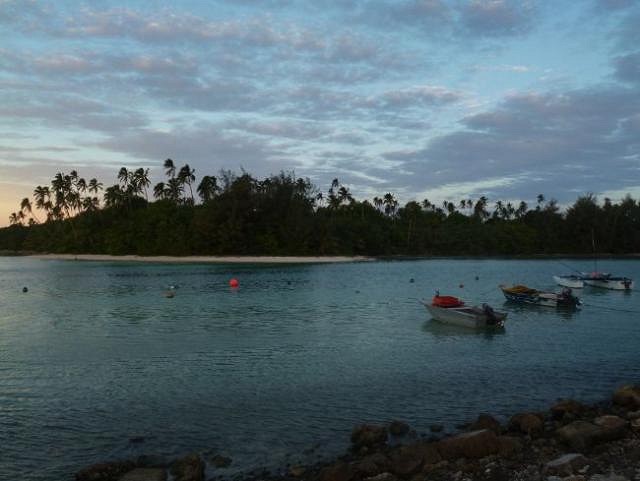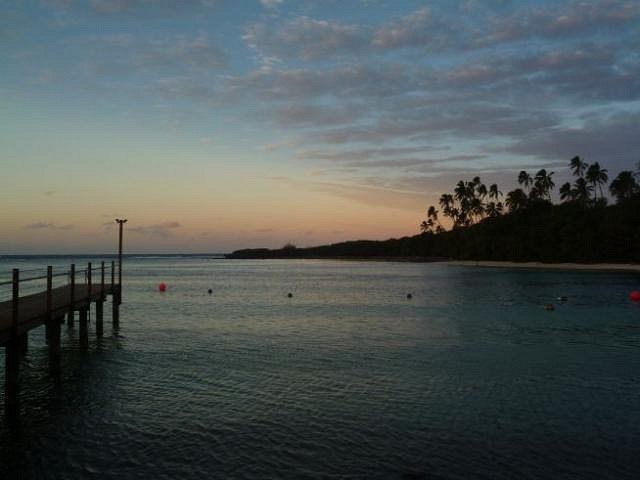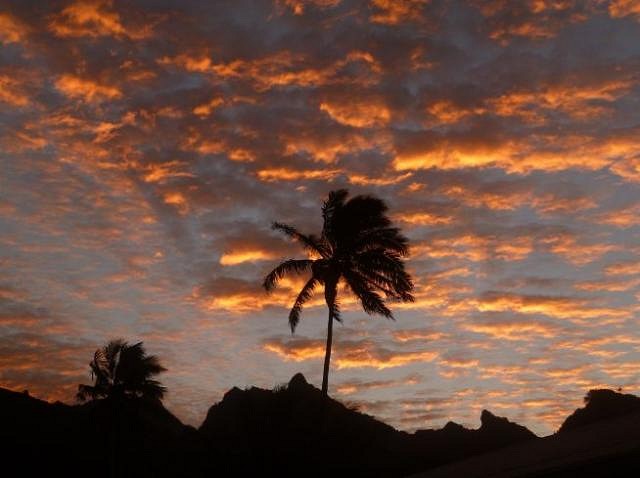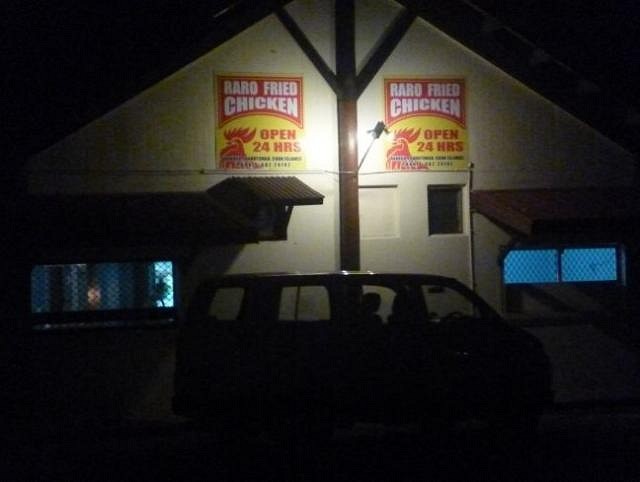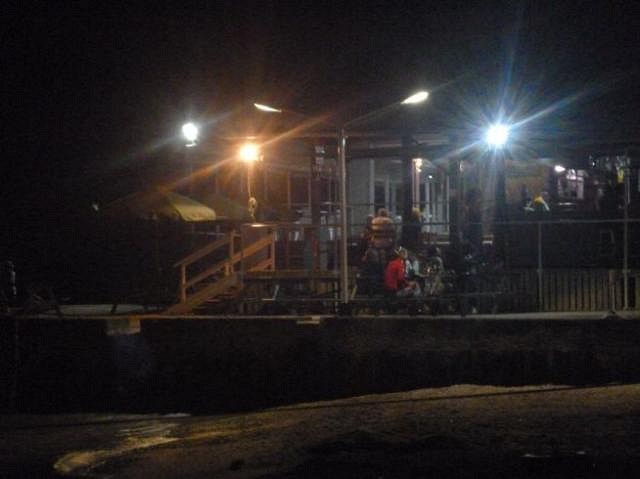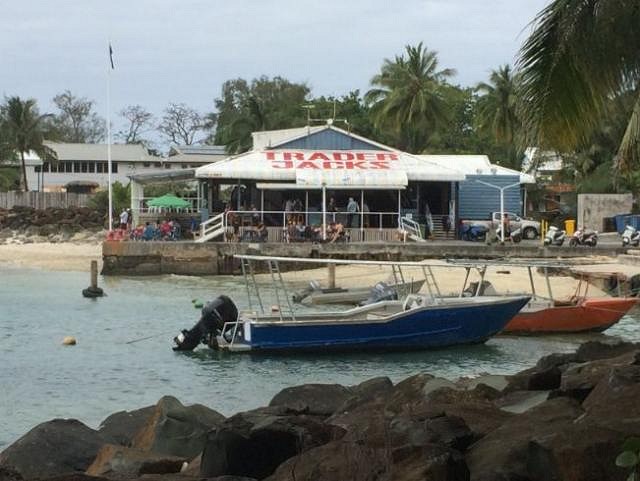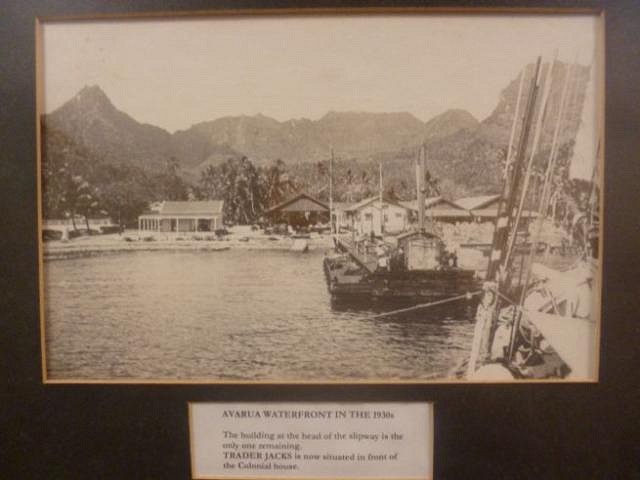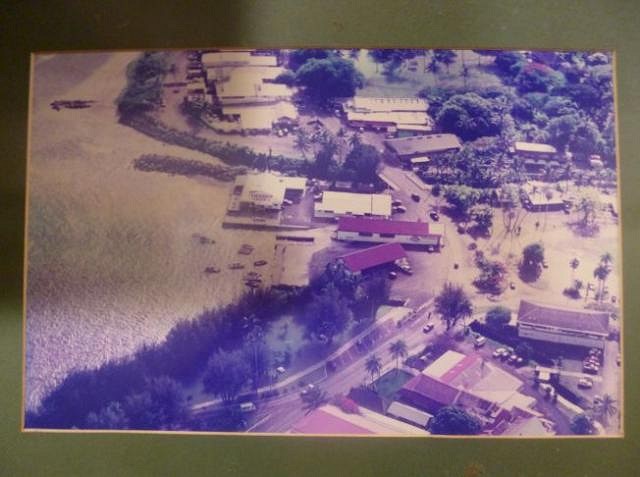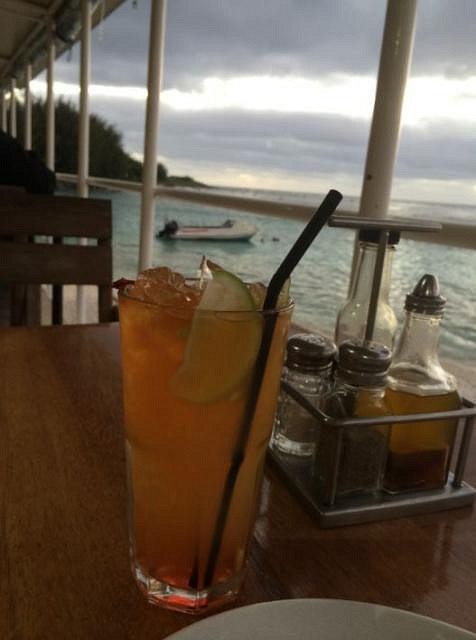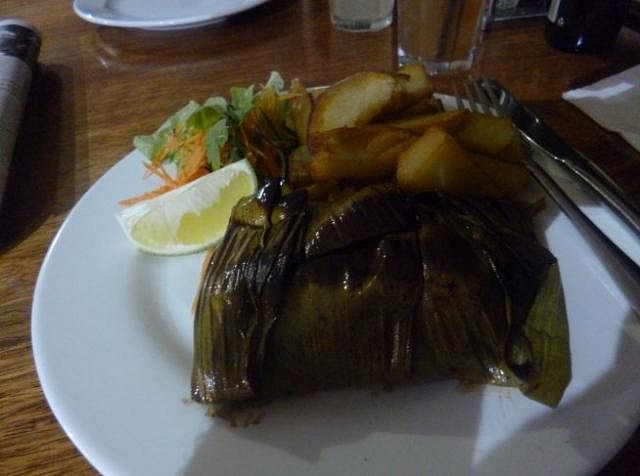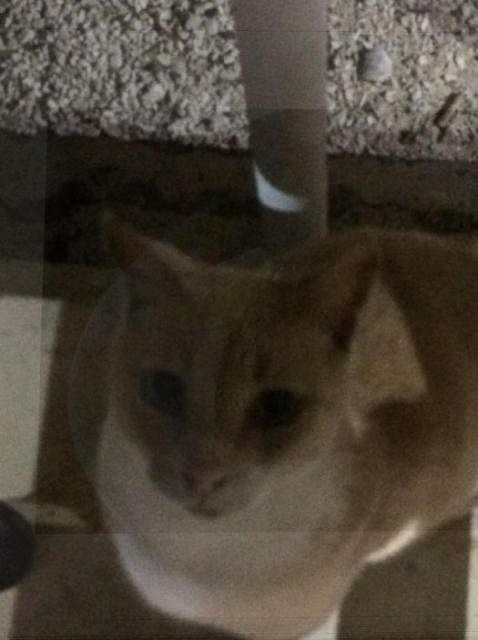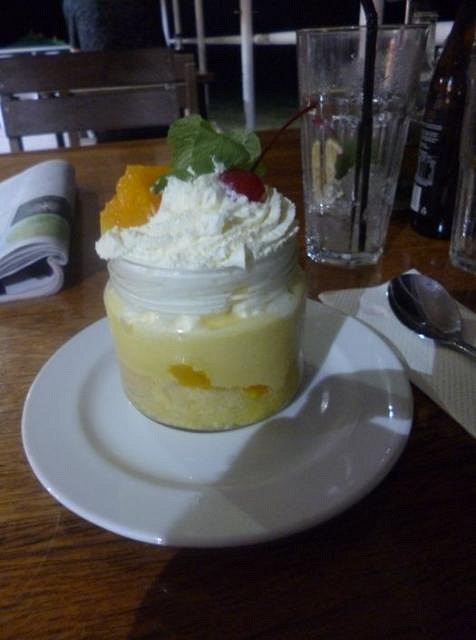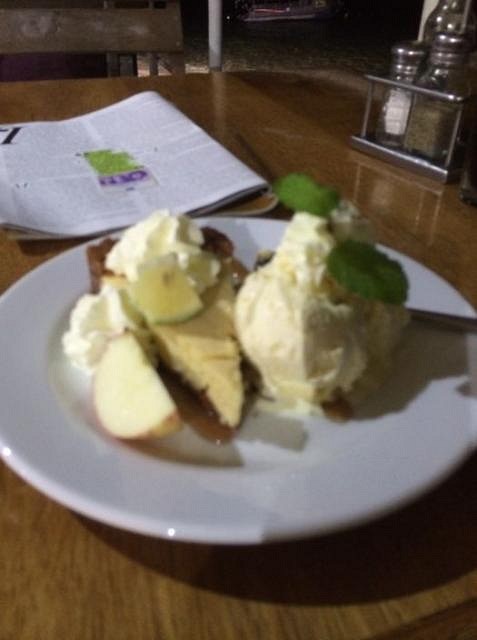Tiki Central / Tiki Travel
Club Nouméa's Rarotongan Tiki Tour
Pages: 1 23 replies
|
CN
Club Nouméa
Posted
posted
on
Sun, Jul 10, 2016 7:46 AM
Rarowhere? A little background...
Rarotonga - the stuff of legend. A high-peaked island colonised by Tahitians in the 6th century AD that was not discovered by Europeans until 1814 and was not grabbed by France during its colonial scramble in the 1880s when it finally annexed its protectorate of Tahiti, along with the Marquesas and the other Polynesian islands that later, in the 20th century, came to be known as "French Polynesia". To avoid the fate of their neighbours, leading inhabitants of Rarotonga and its neighbouring islands called on the British to annex them in the 1890s, resulting in these descendants of Tahitians becoming English-speaking British subjects, and later New Zealand citizens when New Zealand took over stewardship of the Cook Islands after World War II. Since 1965, the Cook Islands have been self-governing in free association with New Zealand, a model which provided inspiration for their French Polynesian neighbours in the 1980s when Tahiti began a push for greater self-rule, leading to it becoming an autonomous overseas territory of France in the 1990s. Rarotonga - the island that was also the South Seas headquarters of the London Missionary Society in the 19th century, and served as a base for missionary activities as far away as Melanesian islands such as the New Hebrides. As occurred in Tahiti, the LMS's missionaries campaigned against heathen idolatry and were instrumental in the mass destruction of local tiki carvings as they inculcated their faith into the Rarotongans. And unlike Tahiti, the LMS's original foothold in the South Pacific, where it lost its influence in the face of encroachment by French Catholicism and the French State, the LMS maintained considerable influence in Rarotonga into the 20th century. So, given this historical background, I was curious to discover just what status tikis now have in modern Rarotonga...
[ Edited by: Club Nouméa 2016-07-10 07:52 ] [ Edited by: Club Nouméa 2016-07-11 06:41 ] |
|
E
EnchantedTikiGoth
Posted
posted
on
Sun, Jul 10, 2016 8:14 PM
Thanks for the brief historical background. I'm excited to see your photos and what you learned! |
|
CN
Club Nouméa
Posted
posted
on
Mon, Jul 11, 2016 6:40 AM
Tiki Ground Zero: The London Missionary Society in Rarotonga
In Tahiti, there was a period of initial contact with Europeans which was largely missionary-free. Over the thirty or so years following the arrival of the HMS Dolphin in 1767 (captained by Samuel Wallis), the focus of the naval officers and sailors who manned the initial expeditions sent there from Britain and France was not on saving the souls of the islanders they met. Quite to the contrary, the loveliness of the Tahitian women and their reputation for a libertine approach to love gave rise to various trysts and openly libidinous scenes of an orgiastic nature that were more than enough to make any man of God blush. Consequently, when the first LMS missionary arrived in Tahiti in 1796, he had a lot of catching up to do, dealing not only with the heathen mores of Tahitians, but also with their unchaste interactions with the less-than-holy Europeans who had already been visiting the island for decades. By way of contrast, the first LMS missionary to land on Rarotonga, an islander called Papehia from Bora Bora, who had been trained by the LMS in Tahiti and was sent off to convert the Rarotongans, arrived there in 1823, only 9 years after the first recorded landing there by European sailors. He had a major impact.
The LMS soon gained sway in Rarotonga, although in the early 19th century they were no slouches in bringing about far-reaching changes in Tahiti either. Their Christian message of peace and love held great appeal to the islanders who, contrary to the idyllic picture painted by French philosophes in the 18th century, led difficult lives in backward, class-ridden societies ruled by tyrants who had the absolute power of life and death over commoners, along with a penchant for periodic internecine tribal wars, and subject to the whims of an arcane religion that included ritual human sacrifice. The cost of adopting Christianity however was the abandonment of much of their traditional culture, including heathen idolatry, and consequently tikis were high on the hit list of cultural icons that the missionaries wanted eliminated. By way of an example, behold Tangaroa, the Rarotongan god of fishing and fertility:
As he was never portrayed as anything less than well endowed, that alone was sufficient to bring down the missionaries' wrath on him, and he still draws the odd titter and shocked response from visiting tourists, to the extent that one local tour company even today feels the need to cover him up in much the same way that the 19th century missionaries covered up the nakedness of the Rarotongans themselves by encouraging them to wear Aunt Jemima dresses and the like:
Tikis were not the only traditional Rarotongan objects targeted for destruction by the LMS. God staffs (as shown in the first engraving above), used by the Rarotongans (like the Tahitians) as part of their religious ceremonies, were destroyed en masse, to the extent that very few of them survived. Consequently, nowadays these god staffs are horrendously rare and exchange hands at auction for enormous sums of money: The headquarters of the LMS still stands prominently along and near Makea Tinirau Road, right in the heart of Avarua, the capital of the Cook Islands. This is the locale that constitutes Ground Zero for the destruction of Rarotongan tikis. The LMS's facilities comprise a large rambling series of verandahed colonial buildings, churches, school buildings, store rooms, meeting grounds and graveyards, too large to capture in a single photo (even panoramic). To give an idea of the charm of the locale, in spite of the tiki havoc wrought there, here is a shot of the Takamoa Theological College, built in 1843, which is where indigenous missionaries were trained before being sent off to far-flung islands all over the South Pacific:
Equally picturesque is the Beachcomber Building, built by the LMS in 1845 on the waterfront by Avarua's harbour:
It was originally used by the LMS as a Sunday school and as a centre for community religious events. Nowadays it houses an art gallery, a couple of shops selling tourist items and... a café:
This idolatrous tiki-ridden scene is not quite what the London Missionary Society had in mind when it built the place in 1845. What is even more piquant is the fact that, on an island that nowadays tends to be overrun by New Zealanders and Australians, the café is owned and operated by an Englishman...
[ Edited by: Club Nouméa 2016-07-11 07:03 ] |
|
T
tripower
Posted
posted
on
Mon, Jul 18, 2016 10:55 AM
Great stuff! Thanks for taking the time for these wonderful posts, I'm looking forward to hearing more! |
|
CN
Club Nouméa
Posted
posted
on
Tue, Jul 26, 2016 7:36 AM
In Search of Rarotonga's Tikis
You get some odd reactions as a Papaa (white fella) walking around Rarotonga. Walking in itself is an unnatural act there - like the Tahitians, everyone on Rarotonga seems to have a scooter as transport as a bare minimum. And no self-respecting man my age walks anywhere, so the common assumption is that you are either mad or lost; most likely lost as I had several people stop and ask me if I needed directions or a lift as I wandered around the back roads of the island, and even along some of the main streets of Avarua, the sleepy village that is the capital of the Cook Islands. But walking is the best way to see the island, combined with hopping on one of the two buses that go around the ring road. A round trip around the island takes about an hour and costs NZ$5. The buses go two ways: clockwise and...
As I wandered around, going up the back roads and getting odd looks from the locals ("what's that white fella doing round here?"), the thing that struck me most, compared to Tahiti, and certainly compared to Nuku Hiva in the Marquesas, was the relative scarcity of tikis as a landscape feature. Unlike the town of Taiohae on Nuku Hiva, which was about the same size as Avarua, few tikis were to be seen adorning private homes. I actually only discovered one house in Avarua that had carvings outside:
Adorning your front lawn, gateway, or the exterior of your home with these idolatrous figures still appears to be an unnatural concept on Rarotonga, and here I detect what I suspect are the lingering effects of the London Missionary Society and its tiki cleansing programme back in the 19th century. Apart from this home in Avarua, I actually only came across one other private home that had tiki adornment; and that was on the other side of the island, up in the foothills above Aro'a Beach, where I spotted this picturesque old colonial residence that looked like it dated from the 19th century:
Walking a bit further along, I passed the gate:
The gateside carving looked like it had seen better times:
This is not to say there are no other homes on Rarotonga with outdoor tikis, but in eight days of scouring the island, these were the only two I found. It was certainly a marked contrast with Nuku Hiva, where tikis were a common feature outside people's homes. Other places where the lingering effects of the LMS's tiki destruction can be witnessed are in the Cook Islands' two museums. The first one I visited was the National Museum, part of a complex dating from the 1980s (as I recall), that featured tikis, some of them very well carved, but they were contemporary carvings, and none of those on display dated back to the 19th century. Visitors are not allowed to take photos inside, so here is one of their nicely carved but modern-day Tangaroas in the foyer:
It was also not possible to photograph inside the the museum at the Cook Islands Library & Museum, a private institution run by volunteers, although the librarian was kind enough to let me take some photos of the carvings in the library:
A tiki stands inside the library entrance, not far from a smaller tiki carefully carved from coral:
And some pieces from further afield. This fellow looks Marquesan although he may have been carved in Tahiti:
And there were some Papuan carvings in the library:
Tiki at the museum entrance:
This private museum's collection of Rarotongan tikis likewise featured carvings that were comparatively recent, although there was a 19th century god staff on display, on loan from the Canterbury Museum (in Christchurch, New Zealand). So this private museum is worth a look, and it also has an interesting cross-section of artefacts such as the canoes displayed in a lean-to outside:
But while there was a relative scarcity of tikis in the landscape, there were more around than I initially thought....
[ Edited by: Club Nouméa 2016-07-26 07:51 ] [ Edited by: Club Nouméa 2016-07-26 19:19 ] |
|
CN
Club Nouméa
Posted
posted
on
Fri, Aug 12, 2016 6:35 AM
On the Tiki Trail in Avarua
Although tikis in Rarotonga are not as prominent a feature of everyday life as in French Polynesia, Rarotonga's tiki culture has managed to survive the impact of the London Missionary Society, and there are signs that it is definitely healthier than it was a hundred or even fifty years ago. Public art featuring tikis, like this bus shelter on the outskirts of Avarua, is becoming more common. Here is another example of wall art, at the Punanga Nui Market in Avarua:
Tikis are also to be found in the form of local public statues, all of which date from contemporary times. A piece outside the National Auditorium:
And another at the entrance to the local campus of the University of the South Pacific:
But my favourite was this joint Maori/Rarotongan piece that was a tribute to the ties between New Zealand and the Cook Islands, at Punanga Nui Market:
And in spite of past missionary hostility to him, Tangaroa has survived and is now an official emblem of the Cook Islands, featured on their newly-minted $1 coin, introduced in 2015:
And even as a quality symbol in the tourism trade:
Indeed, it is in the tourism sector that Tangaroa, Rongo and the other traditional tiki gods (but seldom goddesses) feature most prominently in the Cook Islands. They are one of the few truly distinctive cultural items that really set the Cook Islands apart from the rest of Polynesia and paradoxically are more visible in the tourism sector than in other parts of local society. Avarua's main drag is Ara Tapu Road, so let's have a wander along there and see what's on offer... We might as well start at the bottom end of the market first, on the western end of town, at The Gift Shop:
The Gift Shop has some fine looking tikis on display outside its entrance. Sometimes they even dress them up:
Unfortunately the tikis on sale inside are on the tacky tiki end of the scale, although this is a good place to pick up pareus and beach bar type signs, along with other souvenirs. A couple of blocks further into town, at the other end of the price and quality scale is Island Craft:
Island Craft sells top of the line tikis, at top of the line prices. In the entrance is this large Tangaroa, who stands 5 ft tall:
I was told that in 2015 a rich Dutch couple bought one of these big fellahs and paid NZ$15,000 to have him shipped back to the Netherlands, where he is now a garden feature. Their smaller tikis range from $NZ25 to NZ$2,000 - the more expensive tikis are pricey but good-quality carvings. As you wander along the main road, you will also find other outlets that sell tikis, some of better quality than others, but let's turn back and head over to Punanga Nui Market, which is only open on Saturdays. There you will find:
I very quickly managed to spend a few hundred dollars here on various-sized tikis. The store features the work of Henry Tavioni, who is one of the big names in tiki carving in Rarotonga, and he does nice work that is reasonably priced. Another well-known local carver is his brother, Mike Tavioni, who has his workshop on the Back Road, on the western outskirts of Avarua:
Mike is usually to be found there rain or shine, busy chipping away at wood or even stone...
At first it is not obvious that this is necessarily a tiki carver's workshop, until you start looking more closely... Tiki guardian at the entrance:
Telltale bits from past projects:
And what's that currently being carved?
I walked past Mike's place two or three times a day as it was just up the road from where I was staying and I saw this block of wood being transformed into a meticulously carved tiki over a period of a couple of days. Mike and his brother sell pieces to tourists, as well as making carvings for another major market on Rarotonga: the hotels sector, which we will be checking out in the next instalment... |
|
F
finky099
Posted
posted
on
Thu, Aug 18, 2016 5:00 PM
Another quality installment of your incredible tiki tours, Noumea. Thanks for posting. I've been to Fiji recently (where I found very little "tiki" imagery), but not yet to any other islands in the South Pacific and it's fascinating to see what the ancestral lands of these "well-known" carved images looks like now and how they appear in the respective current societies. Cheers! |
|
CN
Club Nouméa
Posted
posted
on
Wed, Aug 24, 2016 12:02 AM
Thanks Finky099! |
|
CN
Club Nouméa
Posted
posted
on
Wed, Aug 24, 2016 1:46 AM
Tiki Bars and Hotels
In Rarotonga, in this sector you find the good, the bad and the ugly. Usually it is not the quality of the tikis that is a problem, but rather how they are presented; the context they are displayed in. But then again, not always... The tikis featured in the sign for Te Manava Luxury Spa & Villas on the tourist strip of Muri Beach offer an interesting case in point. Nicely cast in concrete, cleverly designed, but not at all authentic. There is nothing Rarotongan about them; in fact there is nothing Polynesian about them either - they are more like a 21st-century stab at some ethno-neutral form of primitivism that falls flat on its face. So there you have the ugly... Then there is the bad. Let's define the word "bad". In the Rarotongan hotels sector, for me it is tikis that look perfectly alright, and are completely authentic, but that are presented in a sterile, bleached setting that is more reminiscent of the antiseptic whitewashed buildings of the London Missionary Society than anything else. One example is Club Raro Resort, on the north coast of Rarotonga, in the Pue district:
This establishment was opened by Sir Geoffrey Henry, the Prime Minister of the Cook Islands, in 1994, and doubtless is a perfectly nice place to stay, but it just doesn't look right. The entrance is enticing:
And the carvings are great - I would love to have this fella outside my front door:
But the sterile whitewashed walls inside are overwhelming and unsettling:
It just ain't in a real tiki style. Where's the tapa? Where's the bamboo? I was wearing sunglasses when I took that photo and I still felt dazzled by the white glare in that foyer. There are other hotels like this in Rarotonga too - they showcase some great tiki carvings, but they are ruined by the horrible white walls everywhere. Continuing with the bad category, we move on to The Hula Bar, at the Islander Hotel, across the road from Rarotonga's airport:
A hole-in-the wall bar in Rarotonga? A darkened room filled with tiki carvings in a Hawaiian style? My hopes were raised by this set-up but...
This completely misleading signage simply led me into a back corridor connecting the various rooms in the hotel... Eventually I got to the restaurant and bar area, but the decor was underwhelming. These were the only tikis visible on the premises:
The interior decor was all very chi-chi and millennial - it looked like some trendy restaurant in Ponsonby or Palo Alto rather than like a Hawaiian joint. I was hoping for more of the bar area outside, but it was all too bare and spartan to have the desired effect, with the spindly little trees and the view over a particularly rocky section of the reef not helping to create a lush tropical setting:
Maybe some redemption would be found in the cocktails? Giving them the benefit of the doubt, I ordered a Mai Tai:
Which turned out to be one of the worst Mai Tais I have ever had. It is the sort of Mai Tai you order at a beer bar that offers a few cocktails on its menu but doesn't know how to make cocktails. Then I realised that was precisely what the Hula Bar was: a beer bar. Various tourist guides list The Hula Bar as one of the top bars in Rarotonga - they are wrong: any tiki cognoscenti visiting Rarotonga who fancy a good tropical cocktail in a Polynesian setting would do best to give it a miss altogether. So where do you go for a Mai Tai in Rarotonga? Well I'll leave that for another instalment, as although the establishment concerned is undoubtedly the best restaurant and bar on the island, it isn't a tiki establishment. If you want a Hawaiian-style joint though, run by a Hawaiian, you need to head over to the southern coast, on Aro'a Beach:
It is a short walk through the hotel units to the Shipwreck Hut Beach Bar, which has been voted by various on-line and off-line publications as one of the best beachside bars in the world: They have at least two tikis, including this ku, so it qualifies as a tiki bar too:
I went to this place for my birthday and was not disappointed. The bar's decor is quite eclectic, featuring various odds and ends from the mainland USA and Alaska as well as Hawaii.
I was dismayed by the speed and approximate mixing involved, but I was served a perfectly drinkable Mai Tai in a jam jar, which I had with a plate of very tasty Butter Chicken:
After dinner, out came the ukuleles, which ended up with me accompanying one of the bar ladies from Aitutaki singing Danny Whitten's "I Don't Want To Talk About It". I kept telling myself this was alright as it was written by a member of Crazy Horse and Rod Stewart's cover of it was purely coincidental.
But as good as the Shipwreck Bar was, the best is yet to come. About 20 minutes walk from there is The Rarotongan:
Tiki torches! Now we're talking....But wait, there's more...
The entrance is guarded by two prodigiously-endowed Tangaroas.
Inside, the walls are lined with carvings, spears and artworks.
The place just looks right - the architecture hits all the right buttons:
And there are tikis everywhere, all of them Rarotongan:
The Rarotongan was built in 1977 and was Rarotonga's first major resort. What I liked about the place was its effort to reflect the island's culture and history, as shown by the bar:
Captain Andy Thomson, born in 1887, was from Long Island and, as a ship's hand on a Boston barque, first reached Rarotonga when he was 15, where he fell in love with a local woman and settled, eventually becoming a ship's captain at the helm of his own schooner, carrying passengers and cargoes to the various atolls in the Cook Islands and further afield to destinations as far away as Tahiti and New Zealand. His home was on the site purchased to build the Rarotongan resort in the 1970s, and has been preserved as a historic monument. He is also honoured with a photo behind the bar:
The bar itself is guarded by several nice tiki carvings:
The cocktails on offer were modern-style tropical cocktails. The one above was called a Polynesian Passion, and I also had a Rarotongan Sunset, which was very tasty. If you want the classics, feel free to ask the bar staff, as they know their stuff. The bar's link with Captain Andy, apart from the fact it was built on his land, was that he liked his tropical cocktails and had a reputation as an entertaining host, with a network of friends that included Robert Dean Frisbie, the American writer, and Tom Neale, a New Zealander who survived naval service in World War 2 and ended up spending 16 years living in isolation on the remote island of Suwarrow. I rate Captain Andy's Bar as the top tiki destination on Rarotonga:
Our next instalment includes a Rarotongan feast on Ariki Day...
[ Edited by: Club Nouméa 2016-08-24 02:26 ] |
|
T
tikilongbeach
Posted
posted
on
Wed, Aug 24, 2016 6:25 AM
I love your posts! |
|
CN
Club Nouméa
Posted
posted
on
Fri, Sep 2, 2016 7:15 PM
Thanks tikilongbeach!:) I am hoping these posts will encourage Tiki Central people to visit Rarotonga - it is a gem of an island. |
|
Z
Zeta
Posted
posted
on
Fri, Sep 2, 2016 7:42 PM
Me gusta!! Thanks for sharing!!!! |
|
B

bamalamalu
Posted
posted
on
Sat, Sep 3, 2016 10:25 AM
Another big Thanks for sharing, Nouméa! I just caught up on the latest installment. Glad your searching paid off. The Cooks are up top on my list of places to visit, thanks for the taste! |
|
CN
Club Nouméa
Posted
posted
on
Sat, Sep 3, 2016 5:51 PM
Ariki Day
The day after I arrived in Rarotonga, I was wandering the back road of Avarua when I crossed paths with a group of Kanaks from New Caledonia. Well aware that they were just as much fishes out of water as I was in this part of the world, I sauntered up to one of them, smiled, and said in French "You're not from around here are you?" He laughed and told me they were part of a French Pacific delegation that had just arrived for the big event on tomorrow. Event? He said there was a big gathering with singing, dancing and lots of people would be there from all over the Pacific. Upon checking the Cook Islands News, it turned out he was referring to Ariki Day, a national holiday in the Cook Islands held annually to honour tribal chiefs. "Ariki" is a word that basically means chief or elder. So the next day, I dressed up for the event, putting on my best barkcloth tapa-patterned shirt, my Gordons "Future Shock" tee-shirt, and grabbed my camera for the big event. It was not long before I came across what was effectively a roadblock on Avarua's main drag:
As part of the ceremonies, every year one tribe is formally welcomed onto the territory of the Avarua tribe whose territory includes the national auditorium where the celebrations are held. The visiting tribe is selected on a rotating basis, and represents all of the other tribes, because if the host tribe had to welcome all of the other tribes onto their land it would take forever and a day.
Proceedings then moved onto the national auditorium, where the assembled Arikis sitting on the stage greeted delegations from around the Pacific, including a Maori delegation from New Zealand:
The Maori crew played the role of mainland Big Bros to the poor little islanders as they strode onto the grounds of the national auditorium; doing the full power dressing thing - black clothes and cloaks and waving their ceremonial speaking sticks and pushing their mana to the hilt. The official Rarotongan response was hilarious. To greet the Maori delegation, the Cook Islanders trotted out a dance troop of reedy little guys dressed in grass skirts who performed an interpretive dance. By the end of it, it was clear they were taking the mickey out of the Maoris as they each put one hand on top of the other, held them up horizontally and then started opening and closing them like crocodile jaws. The mimed message was clear in any language: "Man, you guys TALK too much!!!". All the Cook Islanders had a good belly laugh (as did I). There is a fair bit of good-natured ribbing that goes on at such events between Maoris and Cook Islanders. I once attended a welcoming onto a Maori marae on a very cold, wet winter's day in Wellington, where various international Polynesian delegations were being greeted. The Cook Islands group was led by a very impressive speaker who played the role of the big Ariki from the ancestral lands with an "I dunno if the weather in this place is up to much, and you really SHOULD be honoured we bothered coming" attitude which caused much mirth in the aisles. His words were gleefully translated for me by a lady from the Tahitian delegation I was with, as she could pretty much understand everything the Rarotongan was saying in Cook Islands Maori (it is effectively a dialect of Tahitian). Anyway, back to the proceedings. They lasted about 3 hours, with formal speeches from the various delegations, and speeches from the arikis. Most of them were in Cook Islands Maori, unlike in past years, where English tended to be spoken, and this is part of a recent trend by Cook Islanders to reclaim their language for official purposes, including in their own Parliament. There were a couple of signs outside encouraging visitors to speak at least some Cook Islands Maori:
Probably the low point of the event was the speech by the Cook Islands Prime Minister, who is in the doghouse at the moment for not stepping down although he has lost majority support in the House. The Cook Islanders were very listless as he spoke, many of them pointedly ignoring him and starting their own conversations. The proceedings were however enlivened by a Cook Islands dance troop:
Everything was wrapped up by about 1 pm so we could all head back outside into the stadium's grounds for some kai:
The rush for food was such that I was somewhat dismayed and decided to sit down on a park bench for a while. The wife of one of the Arikis saw me and came over to chat. "We were up all night making that lot. Each of the tribes on the island pitched in. Various of them did their food in an umu (cooking pit) but we just used electric ovens and microwaves as it was quicker. You should get in there while you can... "But it's like a buffalo stampede!" I protested (not inaccurately either). She looked and smiled at me like a concerned auntie: "Well, if you don't push your way in, you won't get any lunch..." So I elbowed my way through the thronging horde and grabbed my lunch:
A coconut and a bundle wrapped in tinfoil:
Which proved to hold enough food to feed an extended family: roast pork, fried chicken, taro and kumara (sweet potato). Not being able to eat it all, I offered some of the meat to a stray dog who was successfully doing the rounds as people ate their lunches on the grass. The very filling lunch was washed down with some water (saving the coconut for later) while I listened to the father and son act providing musical entertainment:
So that was my first Ariki Day, and thoroughly enjoyable it was too!
[ Edited by: Club Nouméa 2016-09-03 23:46 ] [ Edited by: Club Nouméa 2016-09-04 23:43 ] |
|
F
finky099
Posted
posted
on
Sun, Sep 4, 2016 6:31 PM
Noumea, thank you for the recap and photos of Ariki Day. What luck to find out about it! That's exactly the kind of unexpected experiences they really makes travel incredible for me and I love being able to experience it vicariously. The Rarotongan hotel and Captain Andy's look fantastic. I spent a week in Fiji last year and really enjoyed it (mostly on a remote island in the north where my wife and I were able to talk with the locals, experience a very little bit of what their perspectives were on living there and the on the world far beyond in America or Australia. We would like to return to the South Pacific, particularly the Cook Islands, and will definitely keep the Rarotongan in mind. |
|
Z
Zeta
Posted
posted
on
Sun, Sep 4, 2016 10:56 PM
Sweet! Authentic! Total respect. So interesting! We are one |
|
CN
Club Nouméa
Posted
posted
on
Wed, Sep 21, 2016 5:09 AM
:lol: I want what you're having! |
|
CN
Club Nouméa
Posted
posted
on
Wed, Sep 21, 2016 7:56 AM
Rarotonga Past & Present
Circa 1250, a Tahitian chief called Tangiia was forced to flee his homeland due to an ongoing feud with his brother. Tangiia took various of his people with him and, along with a party of warriors sailing from Samoa who he encountered in mid-ocean, occupied lands on Rarotonga by force of arms, lastingly affecting the balance of power on the island, with the Tahitians and Samoans becoming the new overlords. Tangiia is said to have been responsible for the establishment of the marae (meeting place) of Arai-Te-Tonga, a few kilometres to the east of Avarua, on the edge of the Ara Metua, a paved road that ran around Rarotonga:
This panoramic shot was taken on the path of the old Ara Metua (you can see the modern road running parallel to it). As can be seen, the sides of the Ara Metua were marked with various stones, which were where chiefs, dignitaries and taunga or priests sat during ceremonies. Arai-Te-Tonga was also a place of human sacrifice. There is no reference to this on the orientation board at the site, but if my reading of an old map made by S. Percy Smith in 1897 is correct, this is the "maringi-toto" or blood-spilling stone, where the victims for beheading ended up:
The chief's platform is surmounted by a substantial slab of stone that is said to have been transported all the way from Hawaii, indicative of the mana of both Tangiia and this site.
This important historic marae is now within the domain of the tribe of Arai-te-Tonga-Avarua. Arai-Te-Tonga is the easiest of the ancient marae sites to find on Rarotonga, being a breezy walk eastwards along the sleepy back road of Avarua. It is also the only of the marae sites I saw that had an orientation board that provided background information about the site, even if the current ariki are understandably reluctant to indicate the power of life and death their forebears had over past generations... Further eastwards, around Matavera way, is another ancient marae, called Porotaka:
There was no orientation board here, although the layout is fairly straightforward, with the marae consisting of a stony area with seats laid out around the edges, with the local ariki's seat being at the top, and his subordinates' seats being arranged to the left and right of him:
I was told by a local that the structure behind the marae dates from European times and was once the home of the local ariki, probably late 19th to early 20th century:
I spent a not-so-lazy Sunday afternoon looking for the third ancient marae site I visited on the island, catching a bus over to the southern lagoon where I stopped for my lunch:
And where I made a new friend:
After lunch and farewelling my friend, I went off to look for the district tourist orientation board on the main road that was supposed to show where one of Rarotonga's oldest maraes was located. I ended up walking westwards, and took some lovely photos...
... but concluded I must have walked right past the district's orientation board as I was already in the next district by the time I took that photo. Backtracking, and trying to recall the position I had seen on a map back at the motel, I eventually concluded that the board in question no longer existed and headed inland, resolving to find the marae without a map. All I had to go on was a vaguely remembered map I had seen in a Lonely Planet guide back in Wellington, but surely it couldn't be that hard to find... My path took me through fertile agricultural lands. July is mid-winter in the southern hemisphere, but here on Rarotonga I saw tomatoes and bell peppers growing alongside bananas and plantains. On a hunch, I decided to wander up an agricultural road that led to the top of the valley, but ended up at a dead-end in a field of taro:
The hills look enticing but the marae in question was on the flat, so I backtracked to the tarsealed road I had been on and began looking eastwards. After 2 hours of looking, there it was:
"The Isle of Tahiti". I would like to tell you how old this marae is, but information was not forthcoming:
Judging from the name referencing Tahiti however, this is one of the oldest maraes on the island. A central avenue led directly up to where the chief used to sit:
Half-way up, the chief's platform becomes visible. It is shaped like a long-sided staple:
To the left, in front of the chief's platform, was another suspicious looking stone that was too oddly-shaped to be a seat. This looks very much like another "maringi-toto" or blood-spilling stone for sacrificial victims:
View from behind the chief's platform, looking back towards the road:
I paused here for a drink and sat for a while and contemplated the quiet beauty of the place. Although it looks flat, the site is on fairly high land and you could see back down the valley to the lagoon in-between various of the trees. Looking at the clock it was getting near 5 pm, which meant that the last of the Sunday buses had already done its circuit around the island, so I would be walking back to Avarua. Fortunately the tourist strip of Muri Beach was on the way, so finding Sunday dinner would be no problem. The back road soon took me back to the 20th century:
A plantation and its accompanying mansion - this is how the other 2% live in Rarotonga. And then I was moved forward firmly into the 21st century:
Muri Beach is my least preferred part of Rarotonga, mainly because of the conglomeration of arrogant, rich white Papaa who live there, and the appalling attitudes they have brought with them:
"Trespassers will be shot. Survivors will be shot too" - sign on a property with beach access. This is NOT the Pacific Way of doing things... Muri Beach is not a good place for walkers even if you are not trying to access the beach. The locals' dogs are generally quite friendly on Rarotonga but things are different along the ring road running along Muri Beach: there, the rich whites have trained their dogs to be mean and ferocious. Faced with a series of quite aggressive behaviour from dogs coming out to the roadside, I was forced take off my leather belt as a precaution should I need to defend myself. Things almost came to a head with one very aggressive dog that came belting down a driveway at me. Fortunately he decided I was more trouble than I was worth. What a contrast with the dogs owned by islanders in the vicinity of my motel on the outskirts of Avarua: after a couple of nights walking home in the dark there, one initially territorial dog got to like me to the point where he was coming out to say hello every evening and even jumped up to slobber me on the face.
Anyway, I did find dinner at the food market. It was funny to see the very New Zealand cakes on offer as dessert, but then this IS the tourist strip:
Dinner turned out to be Chinese:
Afterwards I went over to have a peek at the site of the biggest Polynesian floor show on the island, with an impressive tiki gateway, about 12 feet high:
A peek inside:
From Muri Beach I had quite a hike to get back to Avarua so I did not stick around. On the way though, I did take some time out to admire Avana lagoon, which was the departure point for one of the last great Polynesian trans-oceanic migrations. A fleet left from here circa 1350 to sail all the way to New Zealand:
I still had about 15 kilometres to walk to get back to Avarua, but I was not complaining as I had the chance to witness one of Rarotonga's glorious sunsets as I walked along the roadside:
The final instalment of this tiki tour will offer a farewell to Rarotonga at its finest bar and restaurant...
[ Edited by: Club Nouméa 2016-09-21 08:00 ] [ Edited by: Club Nouméa 2016-10-10 16:15 ] |
|
CN
Club Nouméa
Posted
posted
on
Mon, Oct 10, 2016 5:23 AM
Farewell to Rarotonga
Tempting though it is, in order to reach the best restaurant and bar in Rarotonga, you have to walk past the island's only 24-hour takeaway joint: Raro Fried Chicken. Down in the old historic port area is where you will find Trader Jack's:
The building is basically an open-sided tin-roofed structure that was rebuilt when Trader Jack's was hit by a cyclone shortly after it opened in 1987:
The entrance to the restaurant is up the steps at the back of the building, which lead into a long hallway that runs behind the main bar area. The walls are lined with historical photos of the old harbour area:
The restaurant offers the nicest view of the harbour and is generally quite cool in the evening, with a refreshing breeze. My first order was the Trader Jack's Mai Tai:
It is not to be underestimated, this cocktail. The first one I had was so powerful I thought they had mixed it wrong. Further tests dispelled that misapprehension. It is heavier on the alcohol than the Trader Vic's Mai Tai, but none the worse for that... There is a local link here; the remains of the wreck of the SS Maitai (specifically its boiler) are still visible on the reef near the entrance to the old harbour, where it ran aground in 1907:
The steamship regularly plied a route between Tahiti and Rarotonga until the fateful day when it ran aground. My first meal at Trader Jack's was crumbed steak with fried pineapple rings:
They also have local specialities like swordfish wrapped in banana leaf and kumara:
If you order fish, you will soon make the acquaintance of Jack himself (the restaurant cat):
He was so happy to receive some fish that when I next visited the restaurant a couple of days later for lunch, he climbed into my lap and settled in. The desserts are nice too; for example their custard:
The great food, potent cocktails, and the wonderful setting are what made me keep coming back to Trader Jack's. All this and very friendly staff and a warm relaxed atmosphere make it the best place to drink and dine on the island. So that closes the Rarotonga tiki tour. I only spent 8 days on the island but had a fantastic time and would recommend it to anyone who wants to try a new South Seas island destination. To close, a blurred image of the Trader Jack's cheesecake - approximate photography is the price you pay after two or three of their cocktails...
|
|
M
MaukaHale
Posted
posted
on
Mon, Oct 10, 2016 8:42 AM
Once again I find your travels very interesting. Thank you for sharing your adventure! [ Edited by: Maukahale 2016-10-10 14:30 ] |
|
T
Tiare
Posted
posted
on
Mon, Oct 10, 2016 1:43 PM
Nouméa I always love your travel posts but this one I was really excited for! In 2003 I went to Rarotonga, Aitutaki and Aitu for my honeymoon. It was an amazing trip. Looks like some places I remember are still there but things of course have changed. We stayed at the Little Poly which was not the resort it appears to be now. It was a few low key bungalows, a hammock and some kayaks which was perfect. I proudly have my carved Tangaroa that I bought from Island Craft on display. As a librarian I had to go to the Library of course. It looks the same. I still have my paper "international member" library card. I hope you had some rukau when you were there, I still think about it. Meitaki for the posts! Denise |
|
C
cheekytiki
Posted
posted
on
Tue, Oct 11, 2016 5:24 AM
I spent a few Months in the Cook Islands, Island hopping on supply ships. I used to love surfing the left off the Harbour sitting out next to the SS Mai Tais stack, then after drinks at Trader Jacks where I had my first ever Mai Tai that I remember and onto the Balcony bar for Island nights. |
|
CN
Club Nouméa
Posted
posted
on
Tue, Oct 11, 2016 3:26 PM
Thanks for your warm responses :) Tiare, the Cook Islands would have been a magical place for a honeymoon. I thought the library was very well-stocked too. Cheekytiki; the cinema is now a mini-multiplex (3 cinemas) with Dolby Digital sound :o Unfortunately they only had kids films on when I was there so I did not go. |
|
F
finky099
Posted
posted
on
Thu, Oct 13, 2016 4:33 PM
Club Nouméa - once again you have enthralled me with vicarious experiences of your travels in the South Pacific. Thank you for sharing all your photos and your journey in general. I really want to get back to this part of the world an experience it as you do. While I truly enjoy American Poly-Pop, I love learning about the history ("then" and now) of the places from which so many of the images and exotic ideas came from. And I find it fascinating. Mahalo to you and Cheers to more great travel! |
Pages: 1 23 replies

